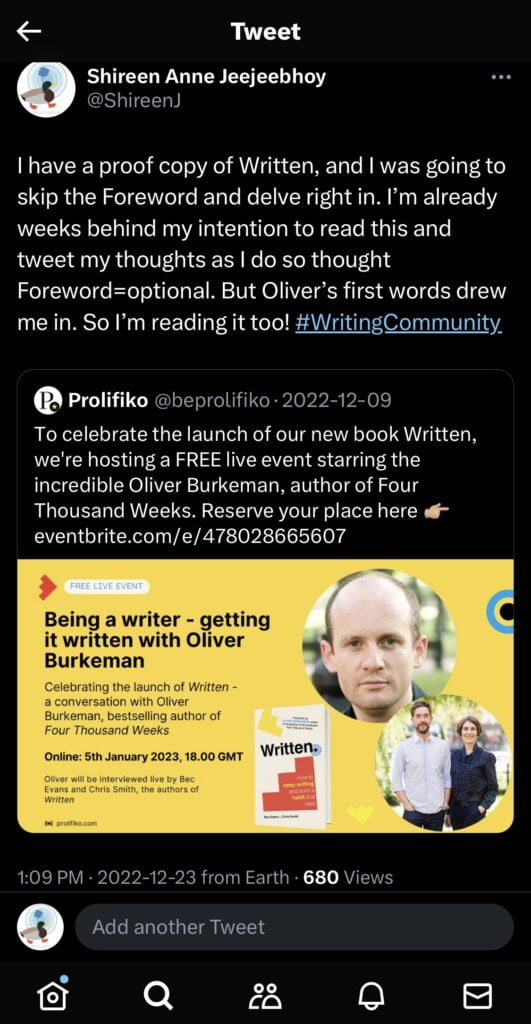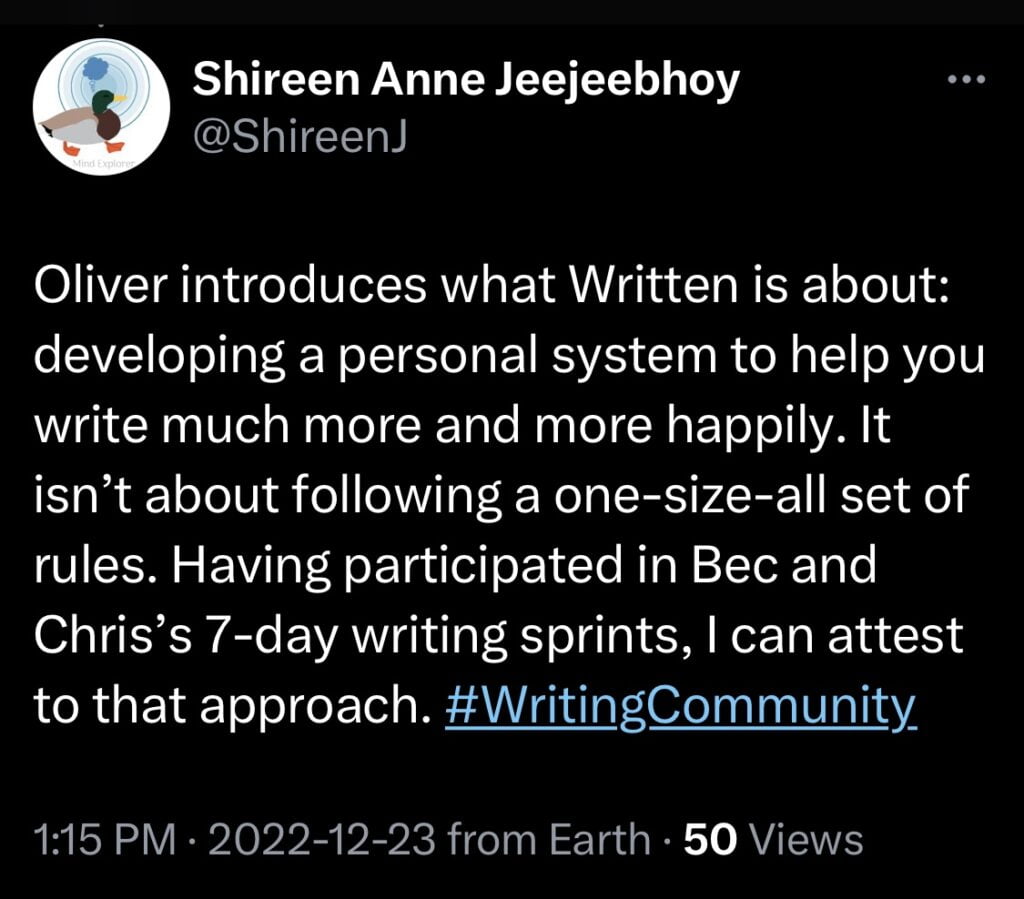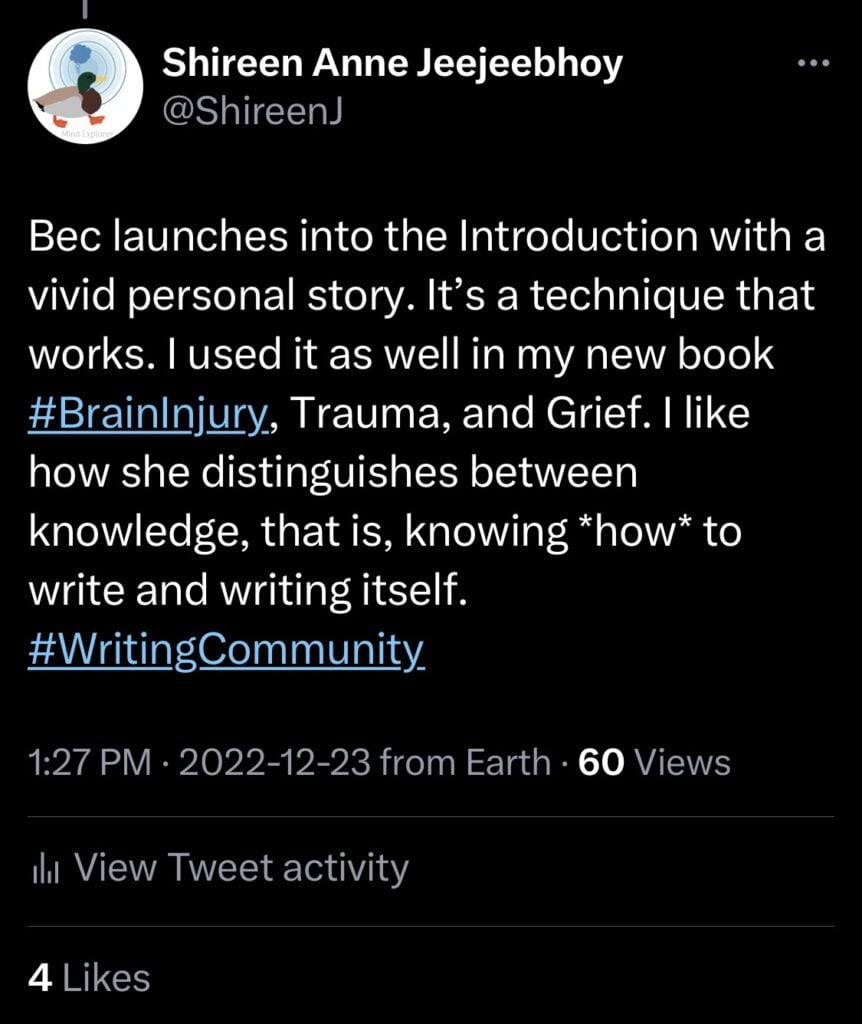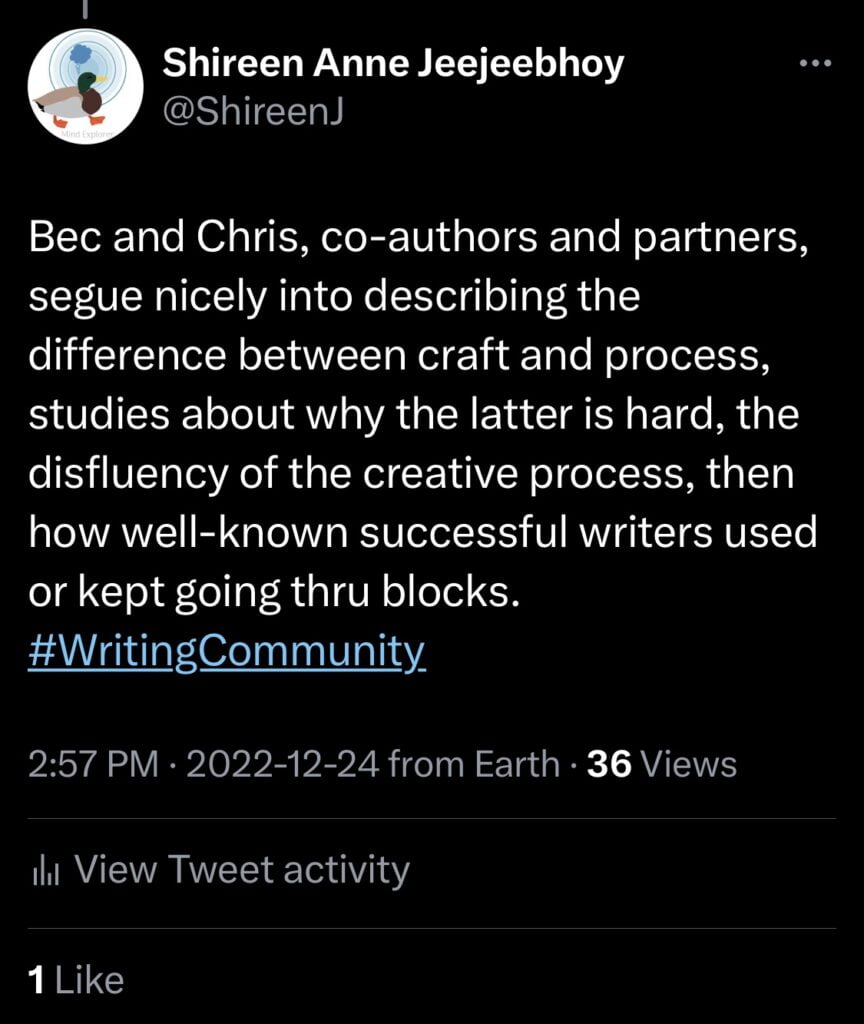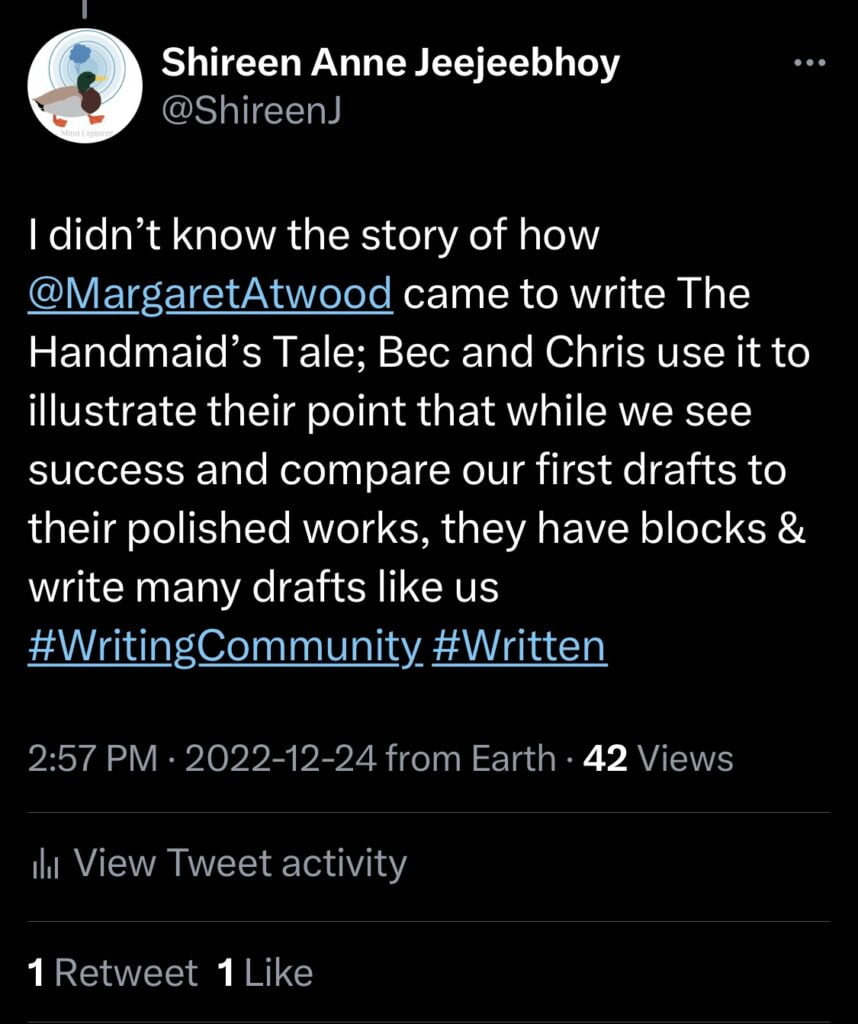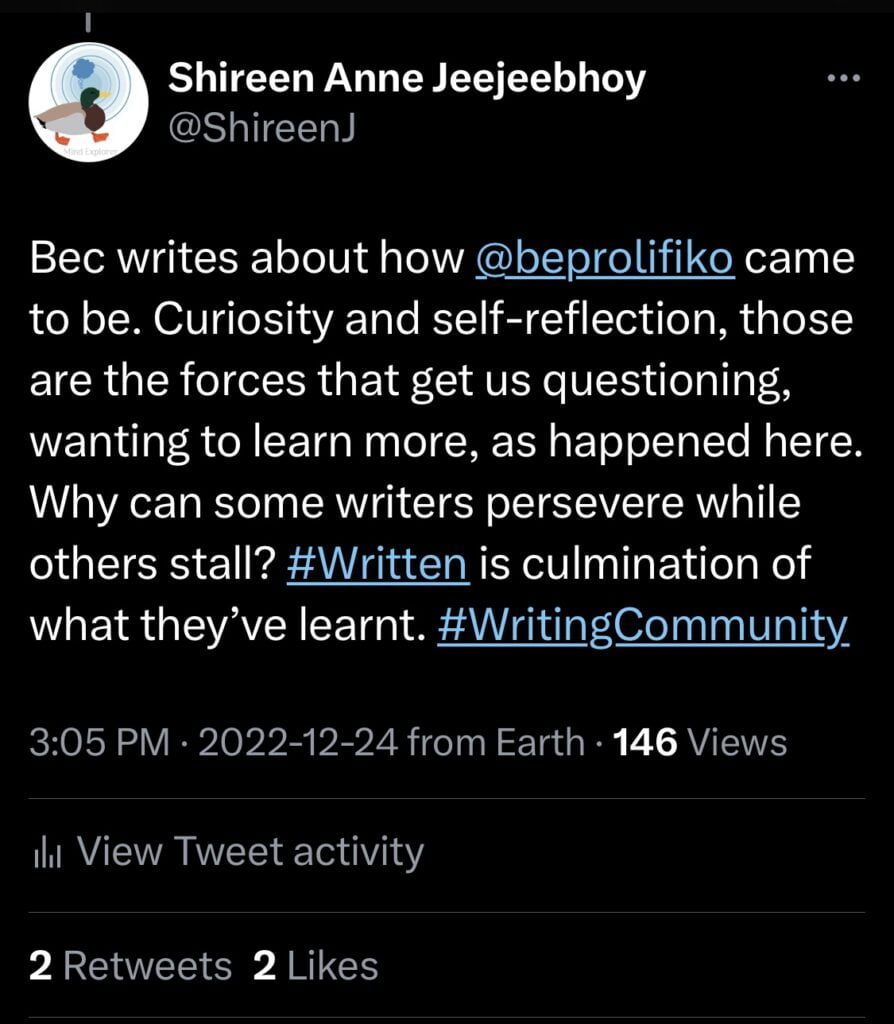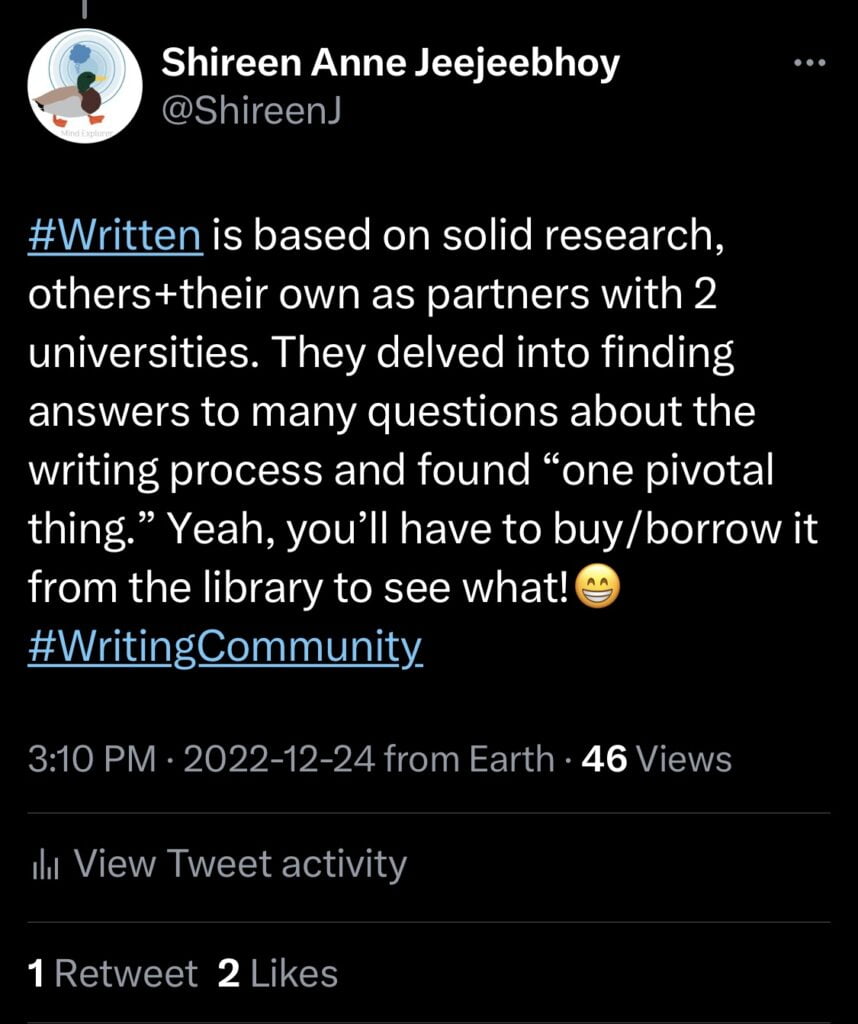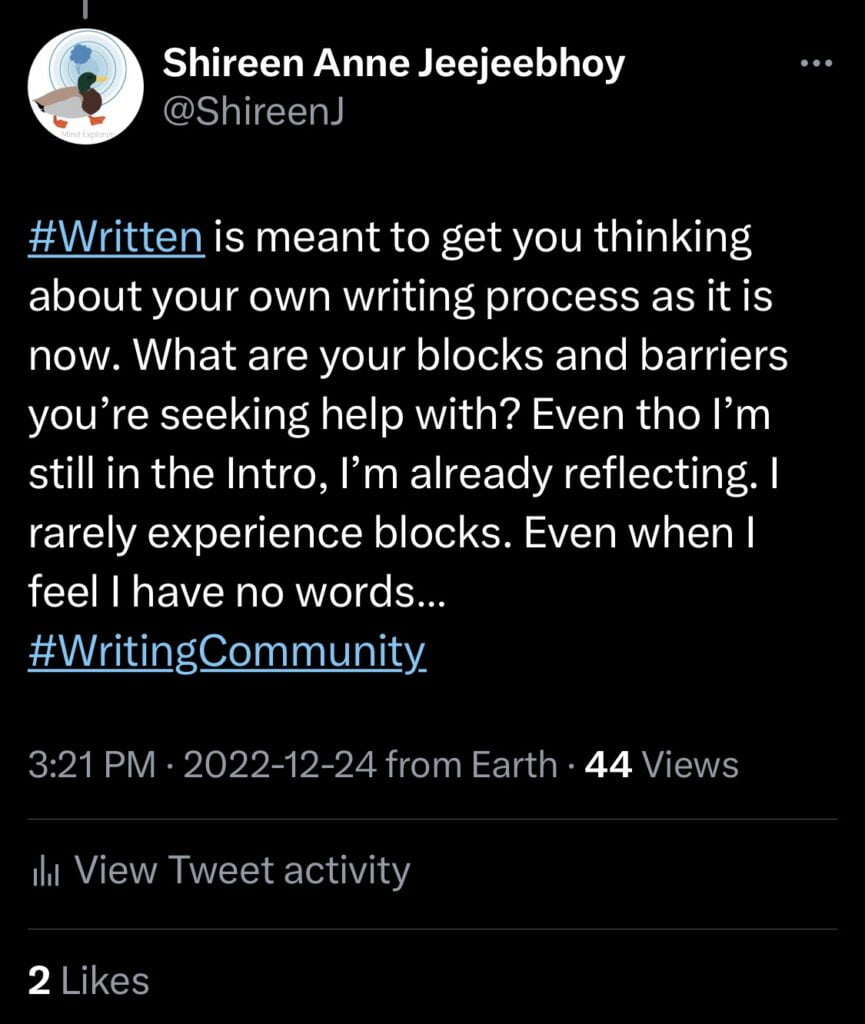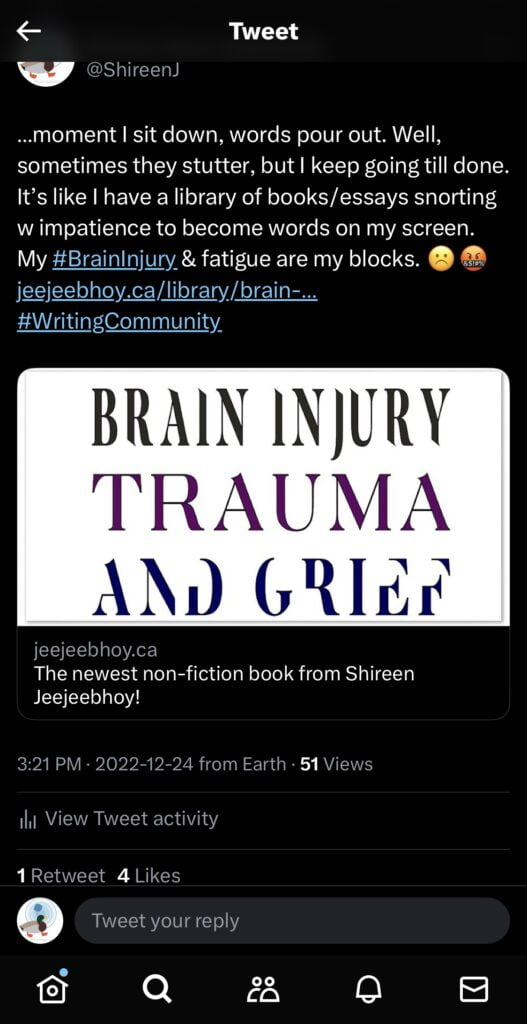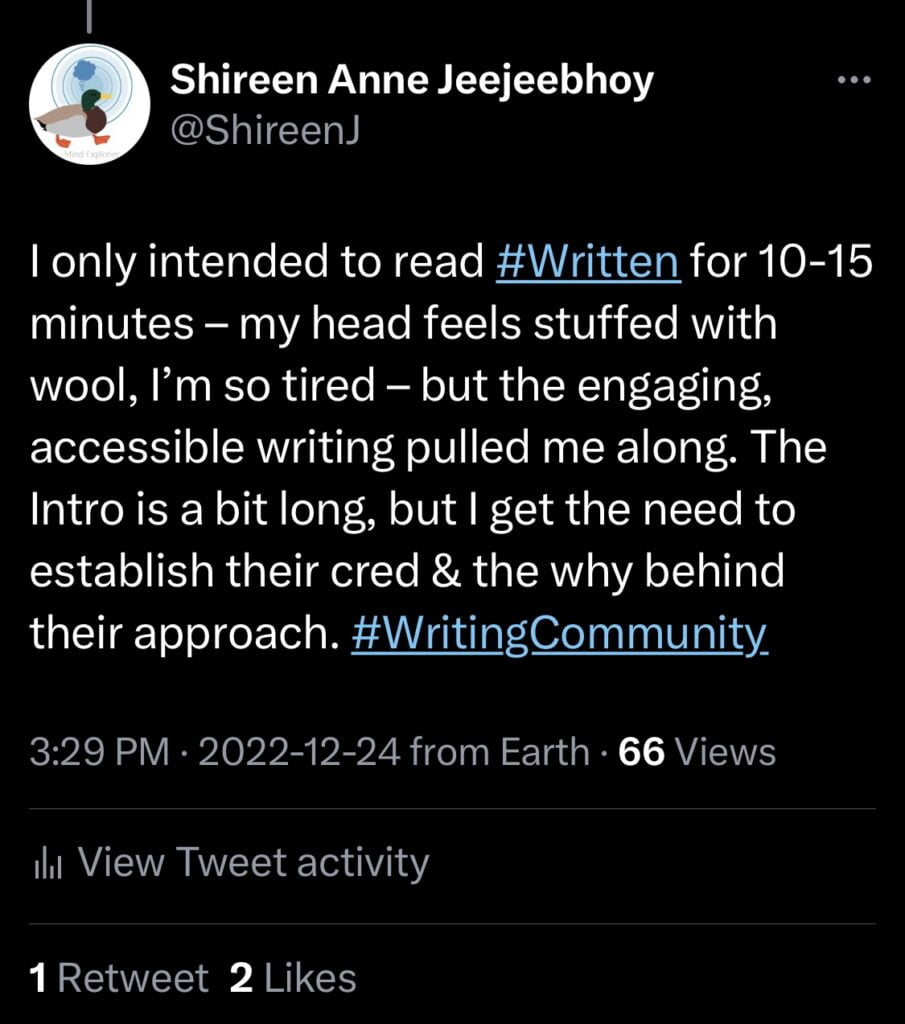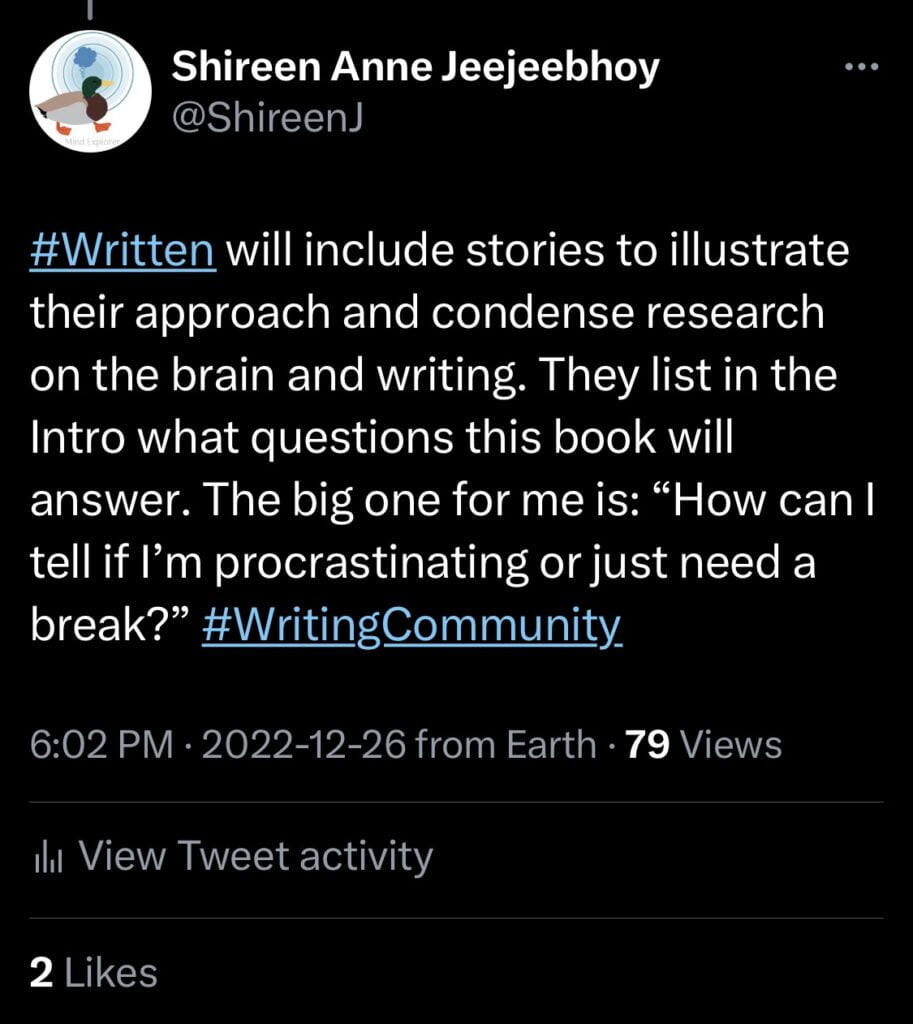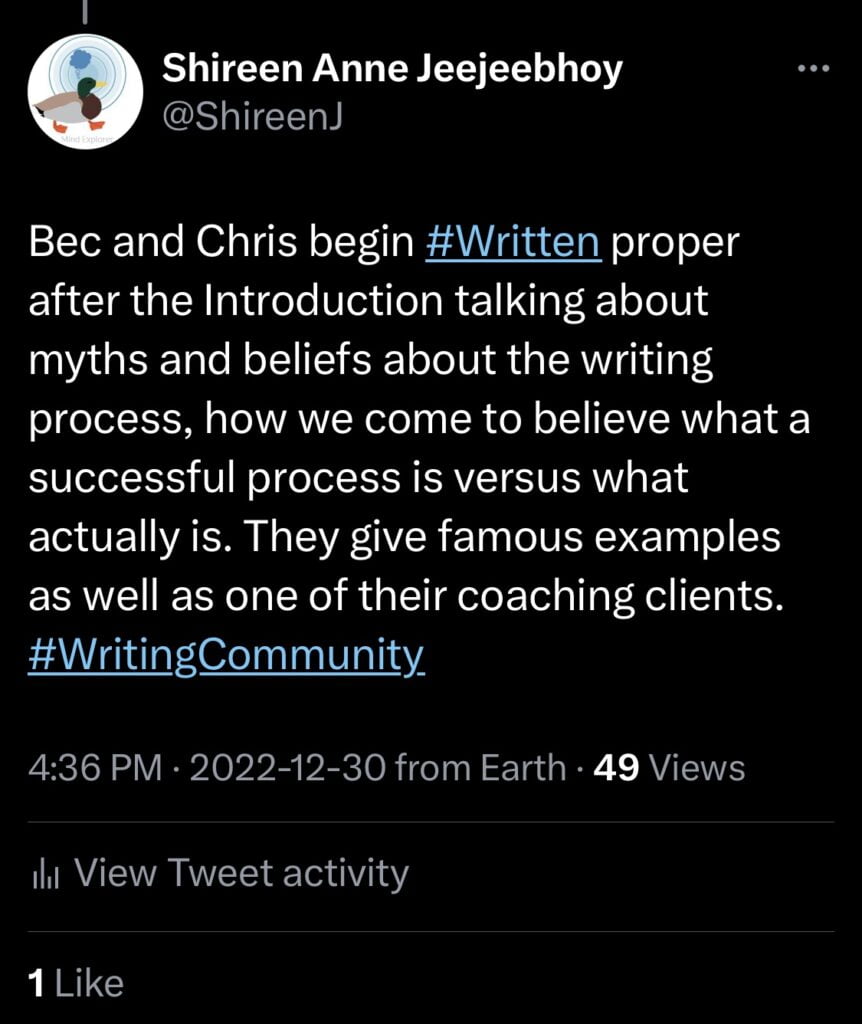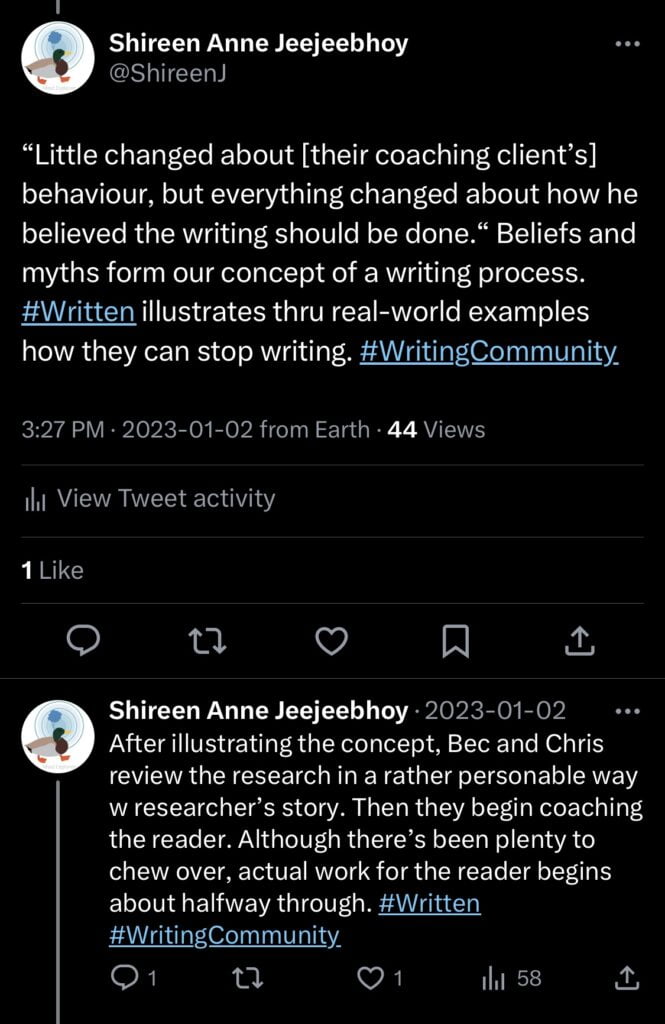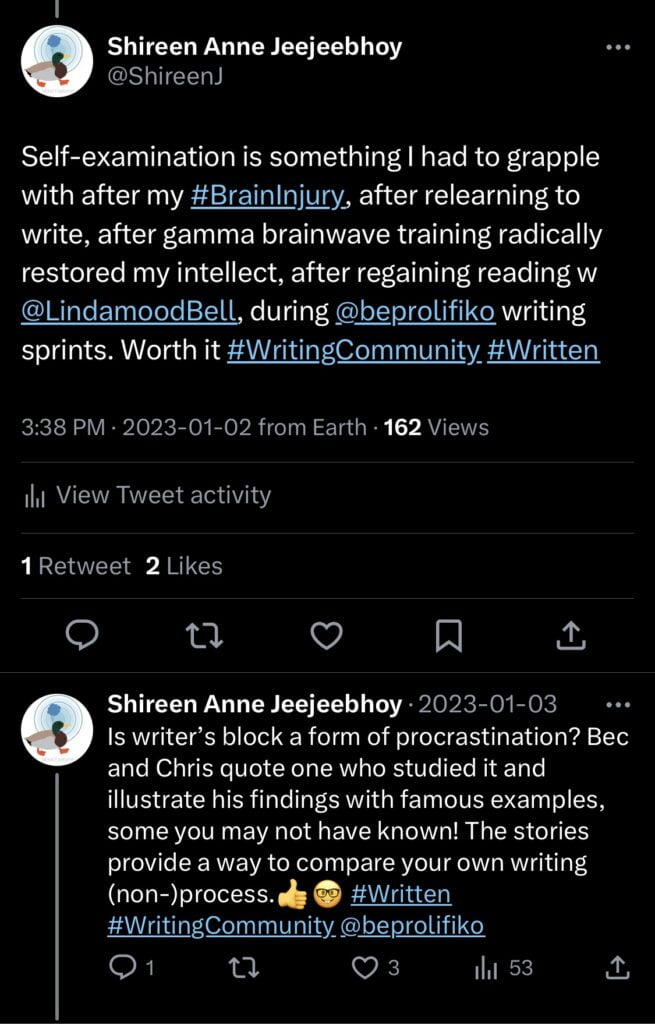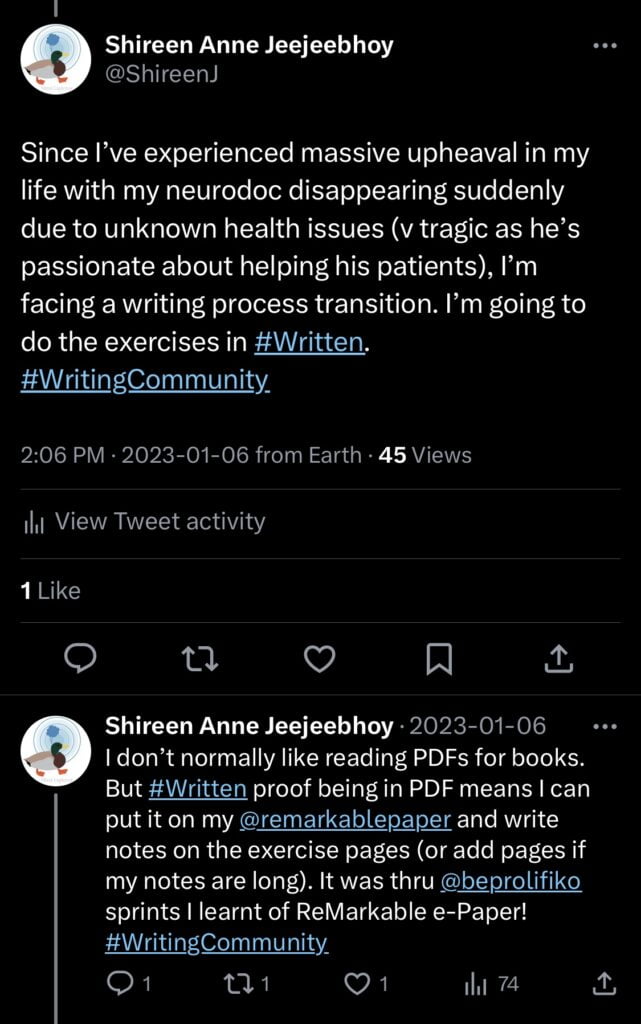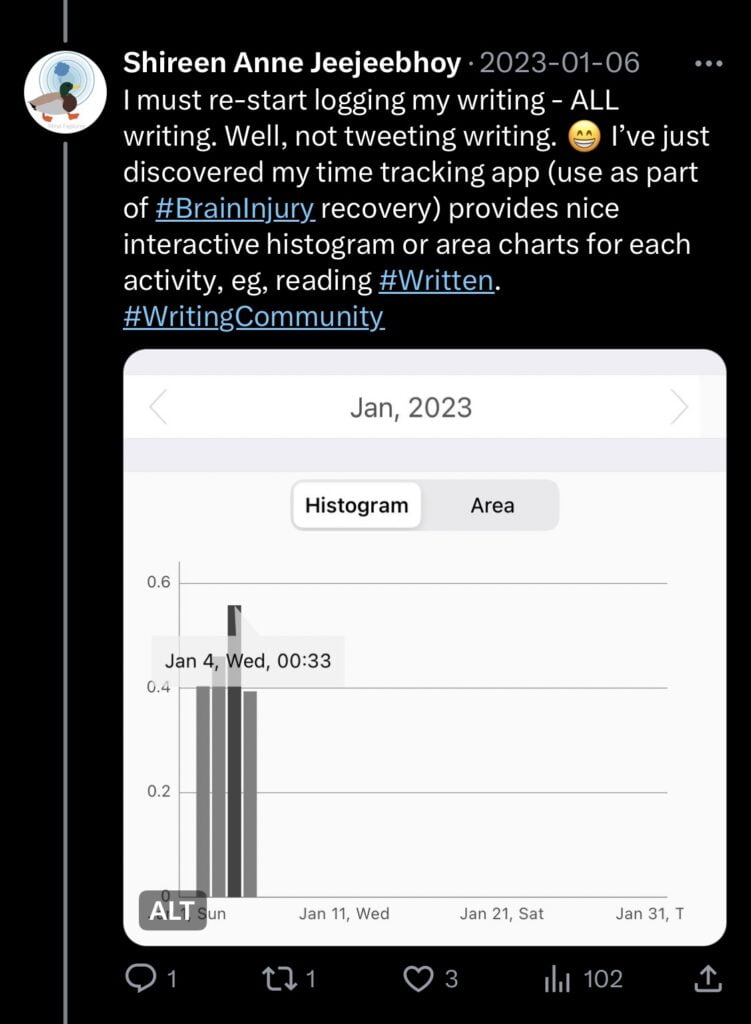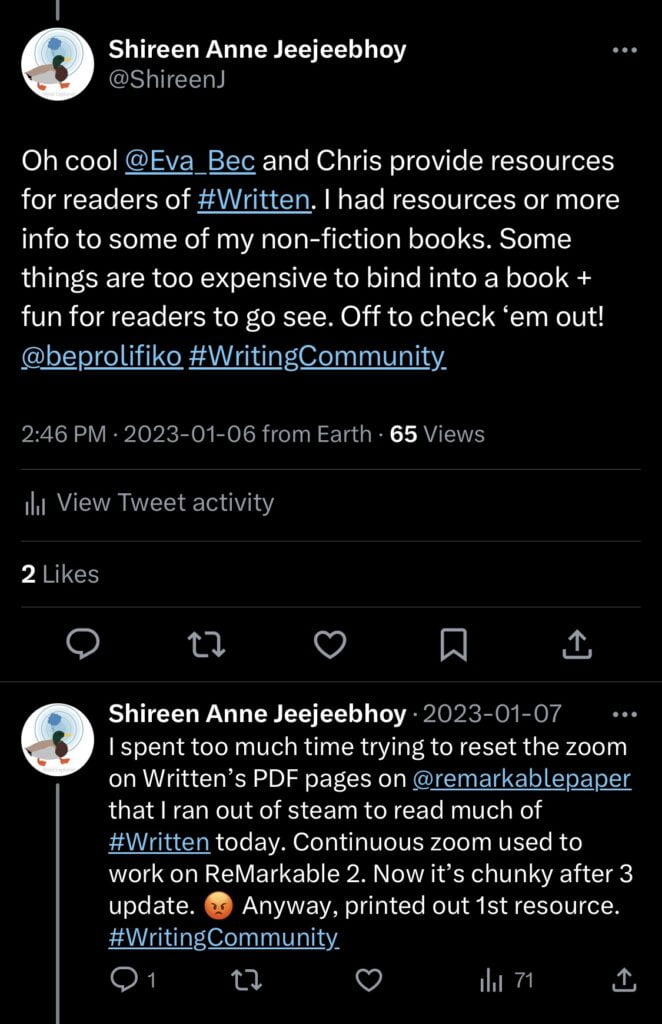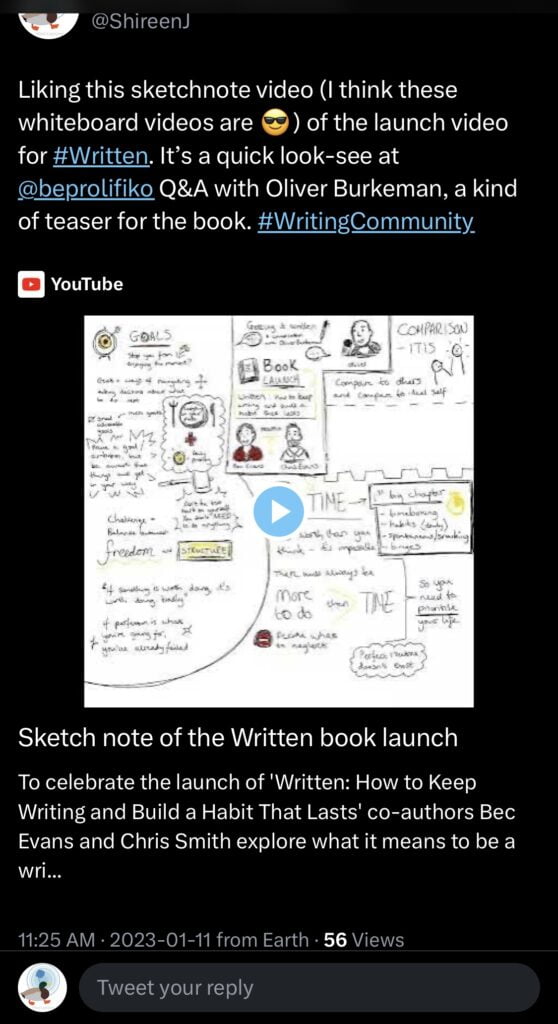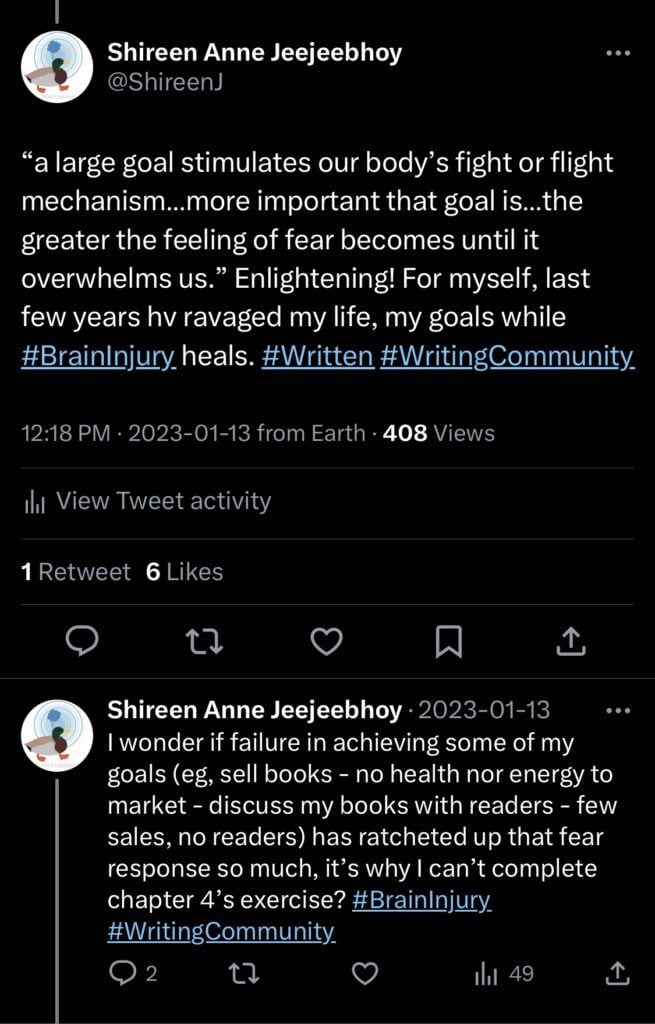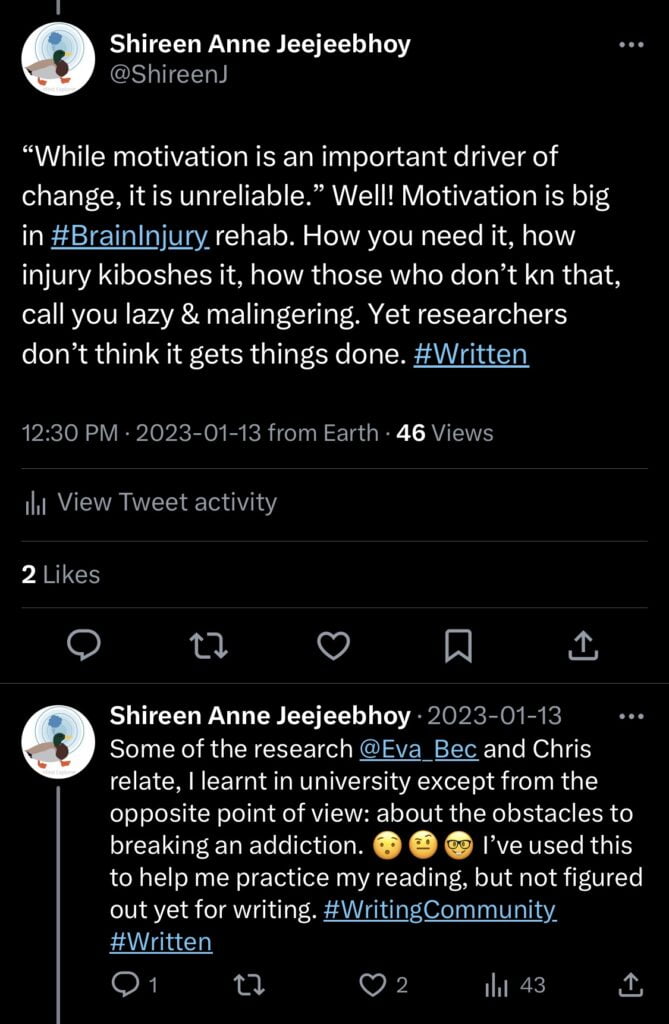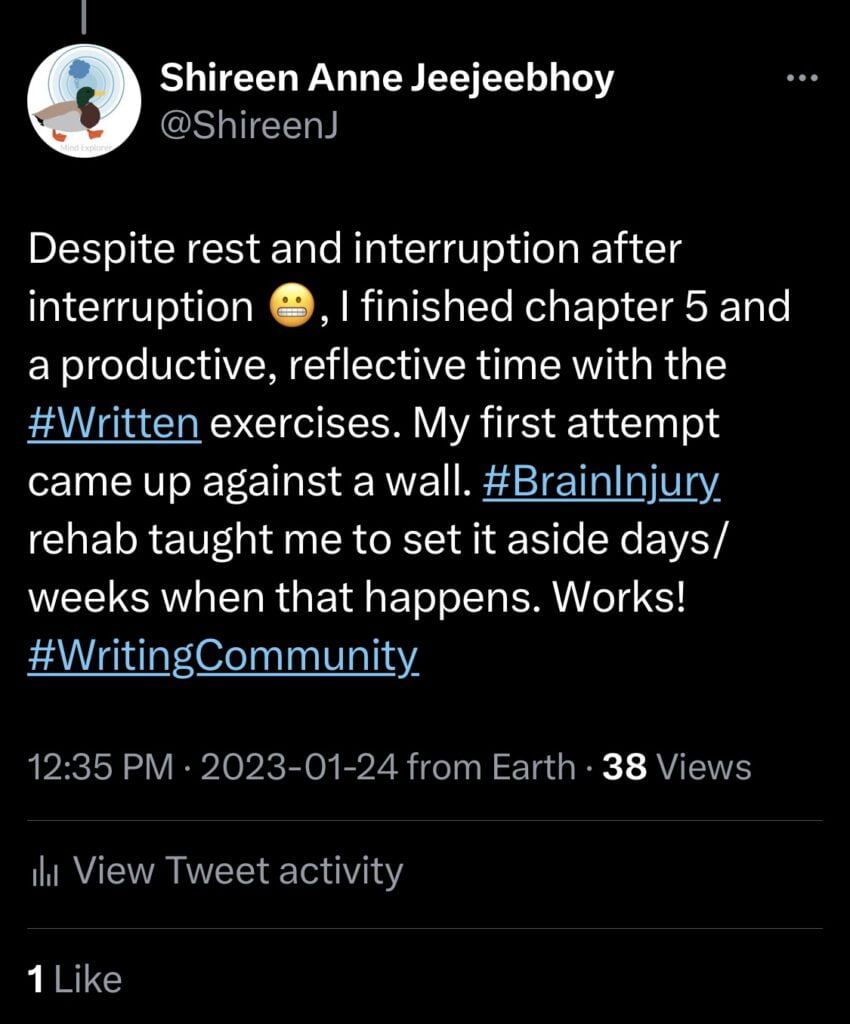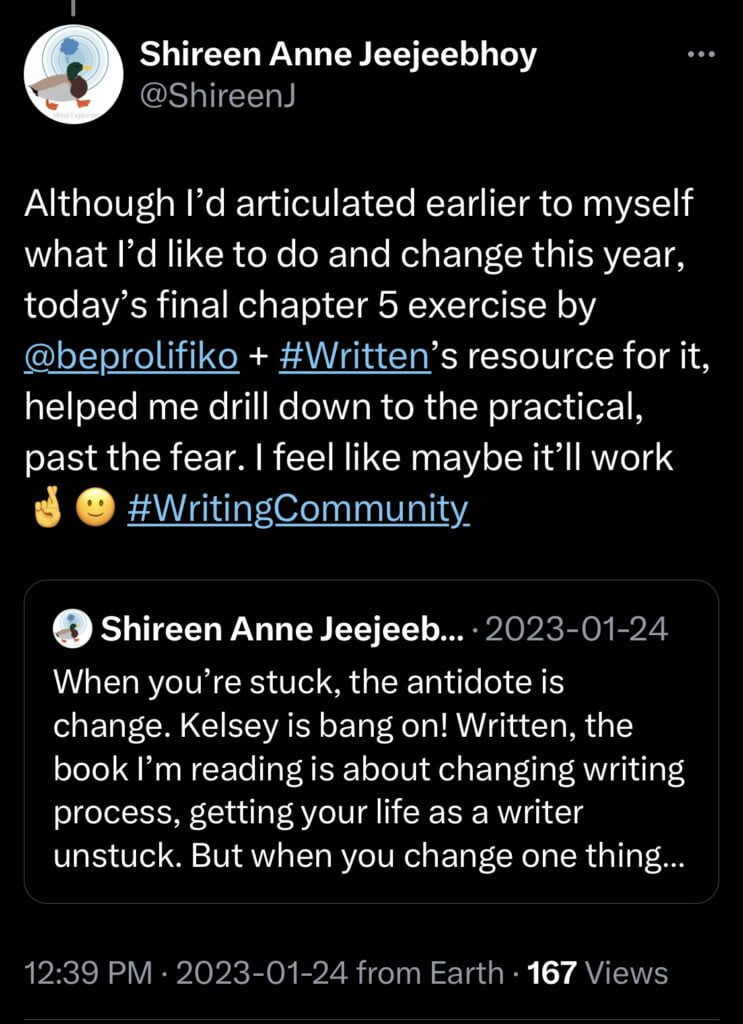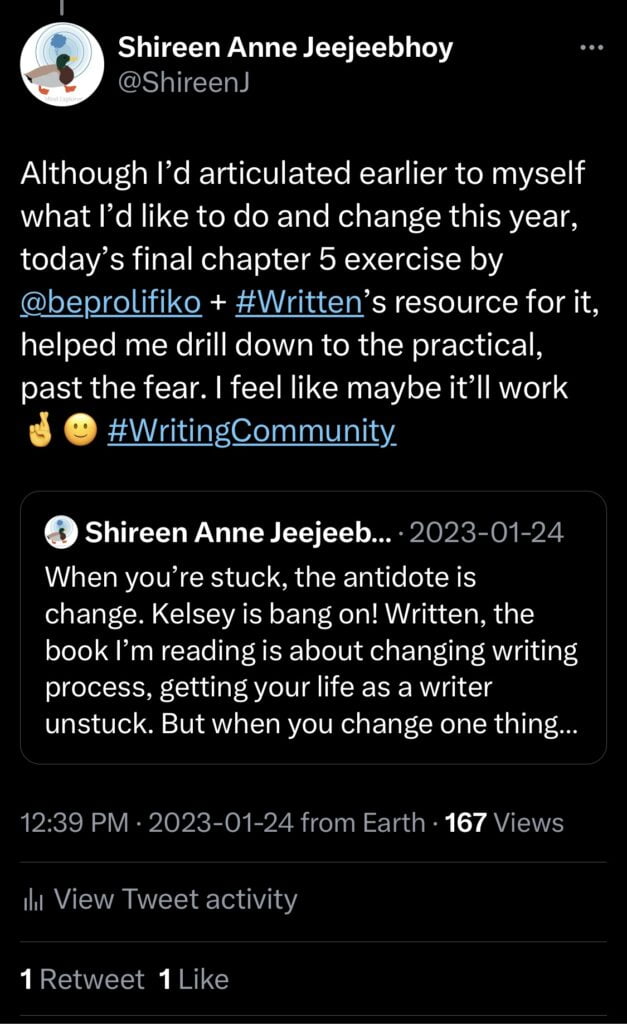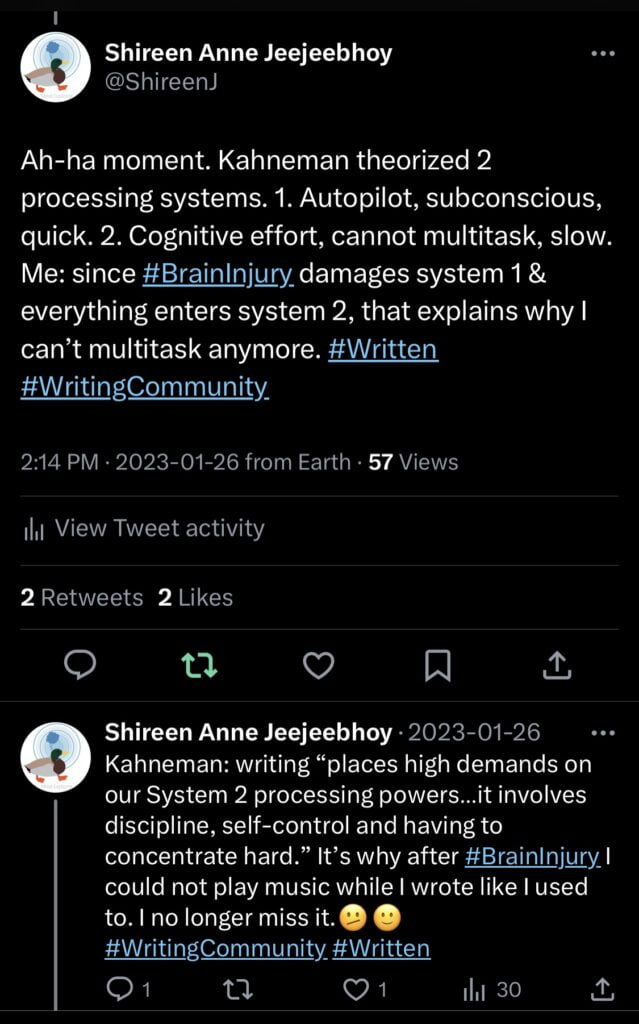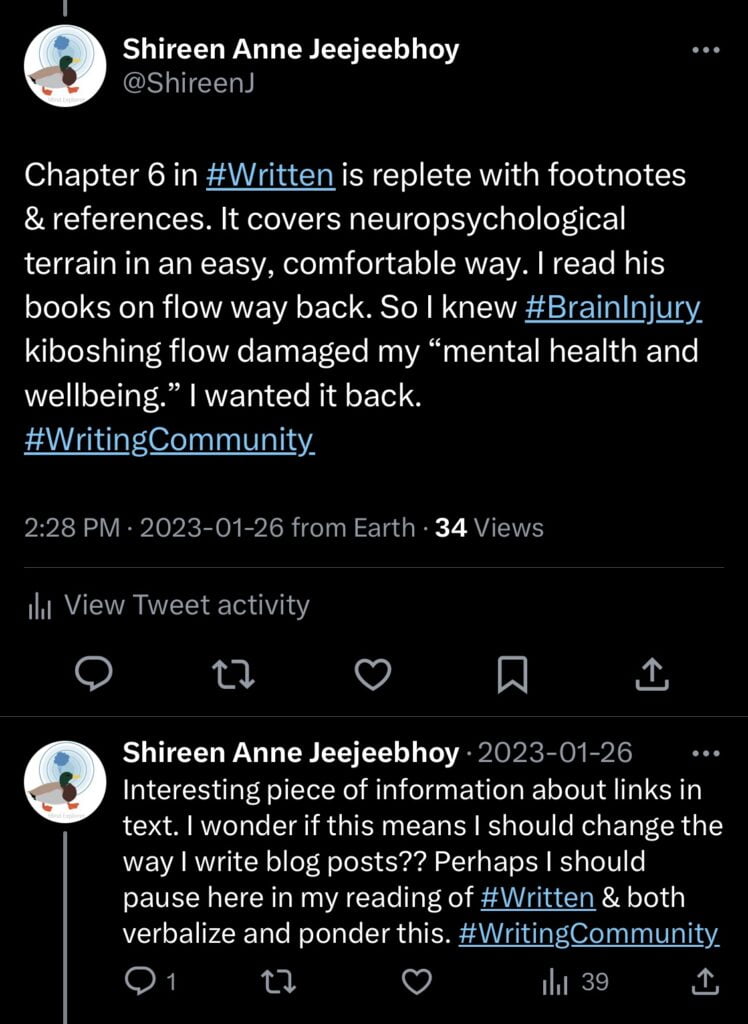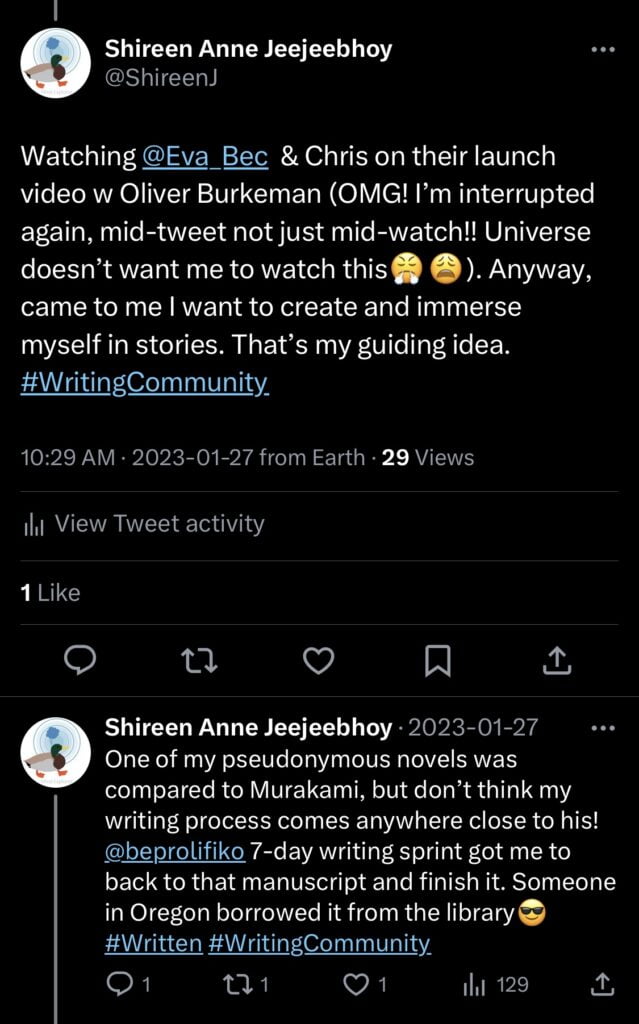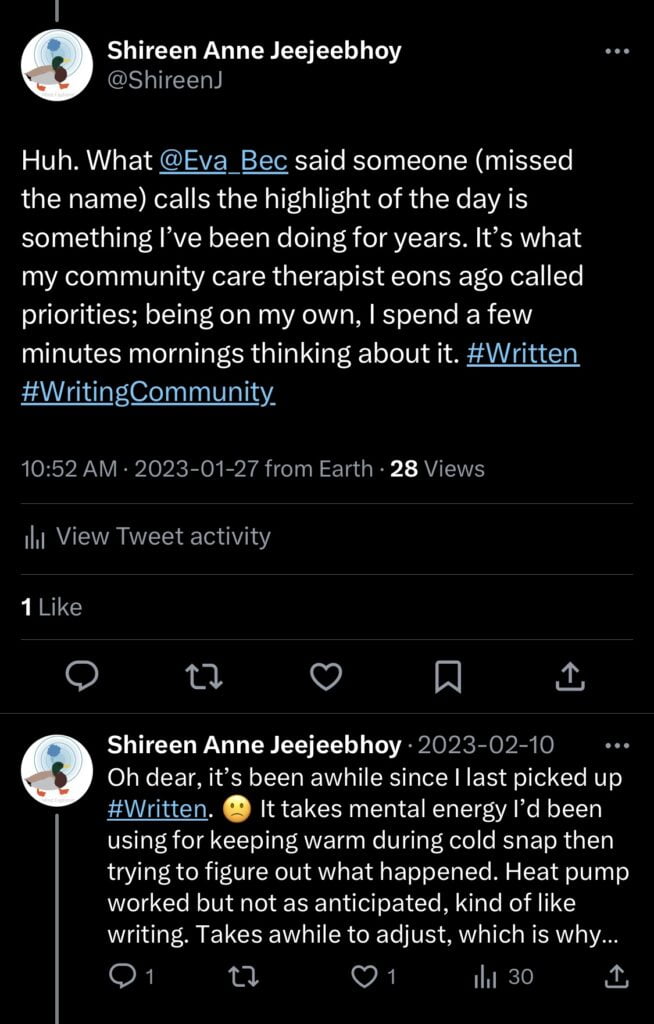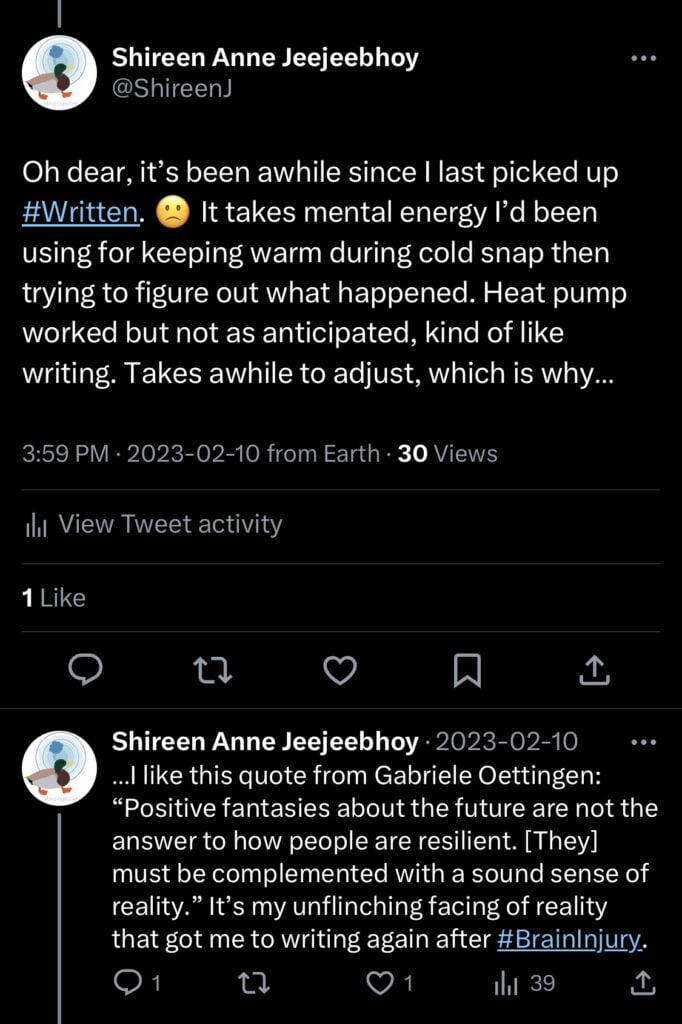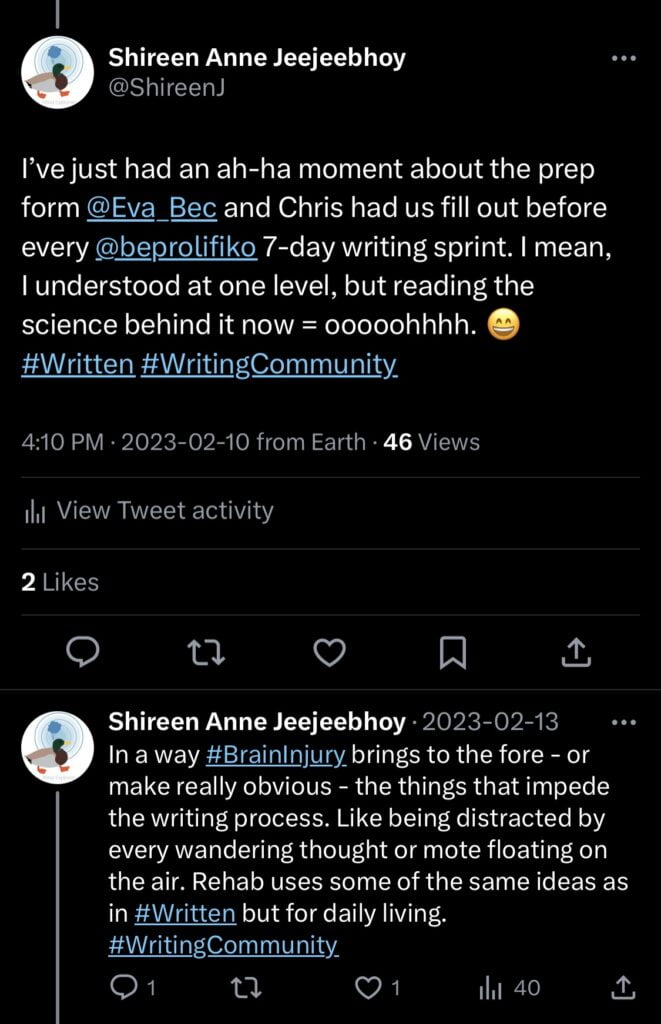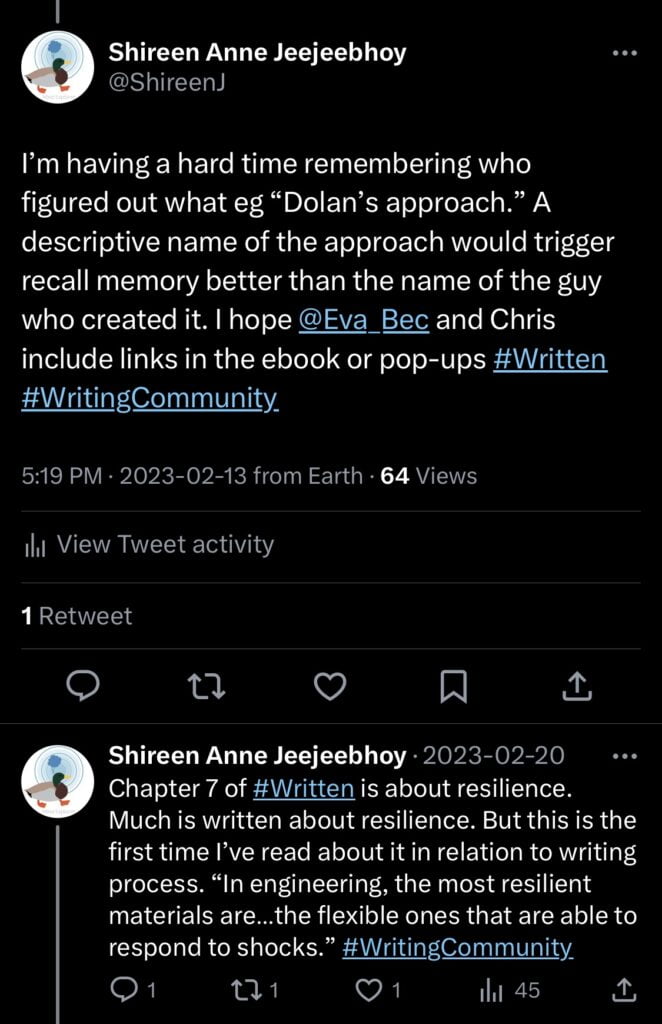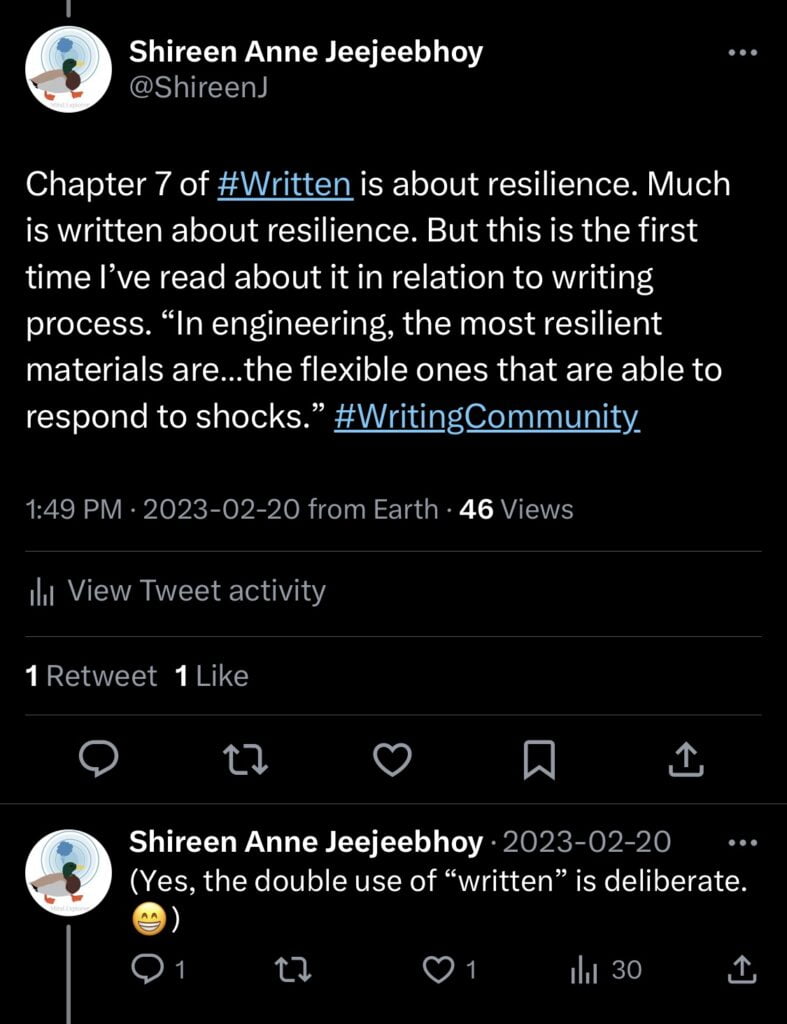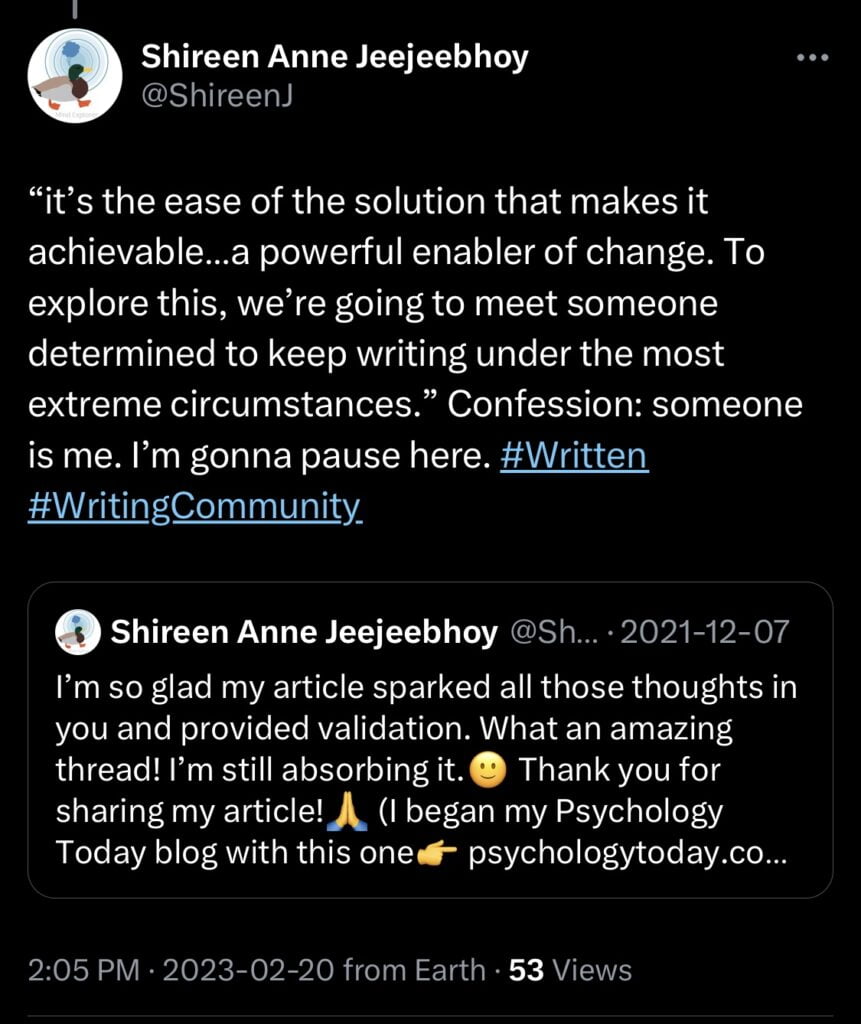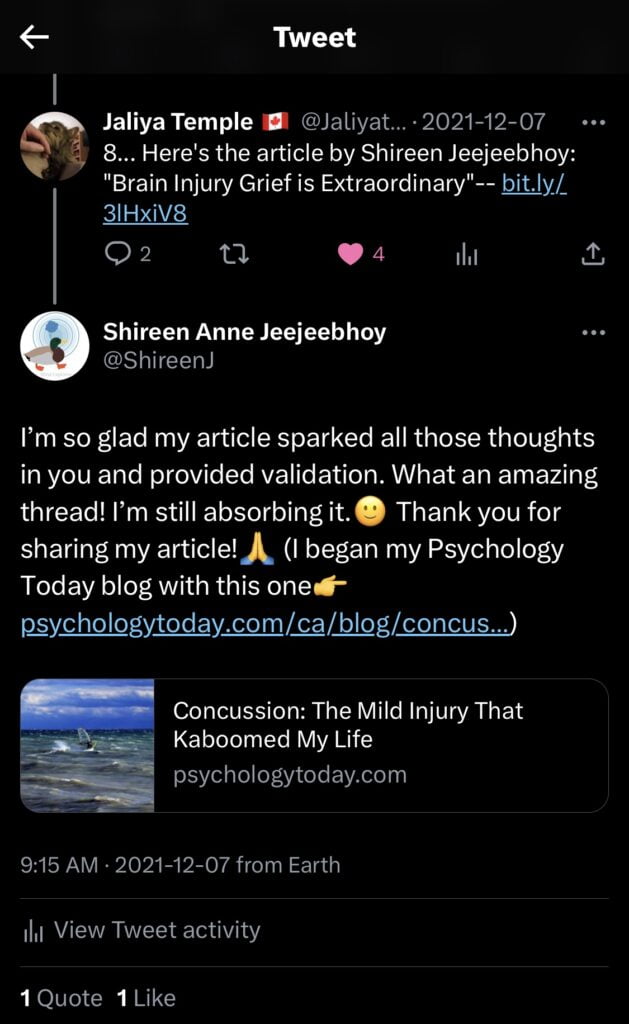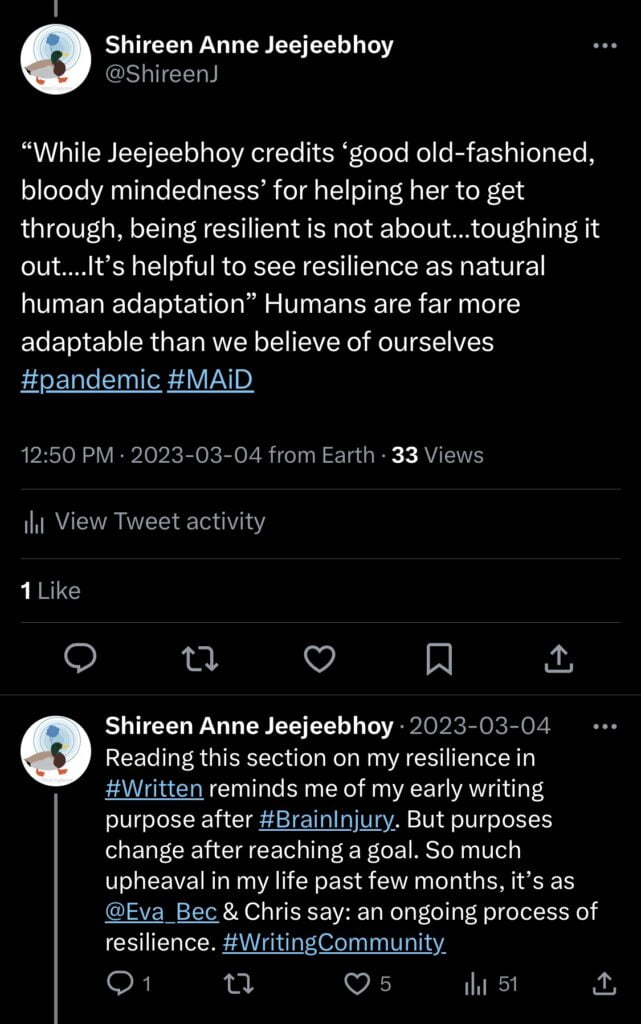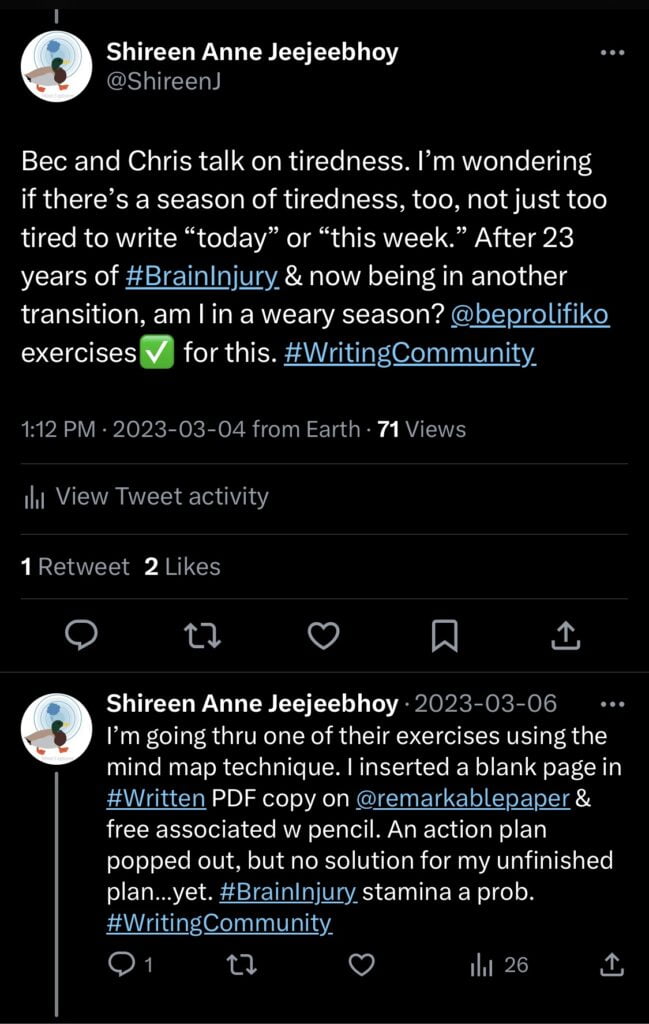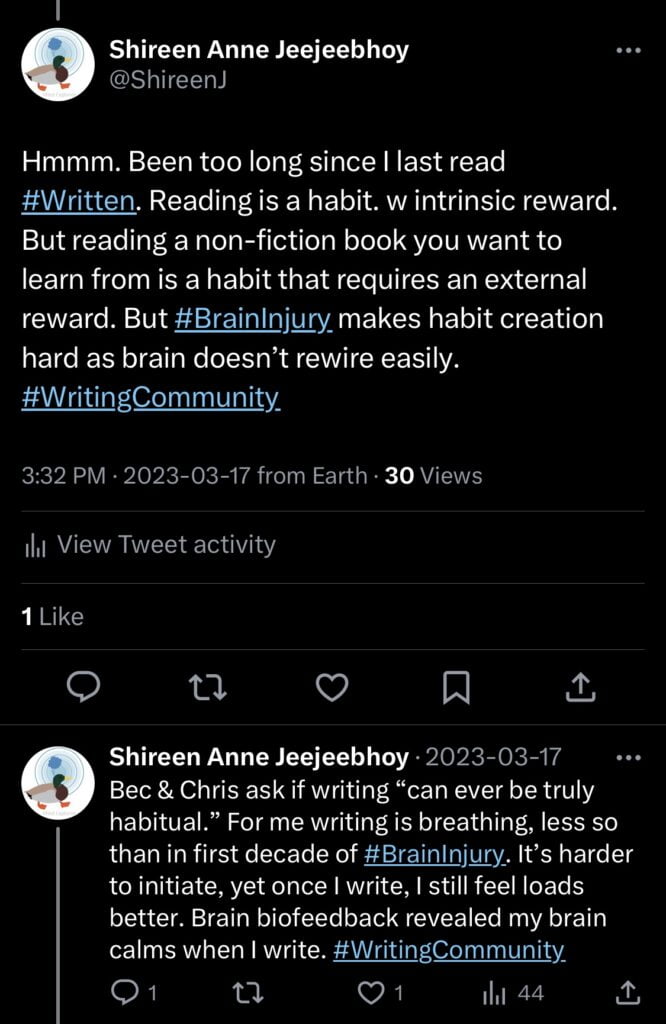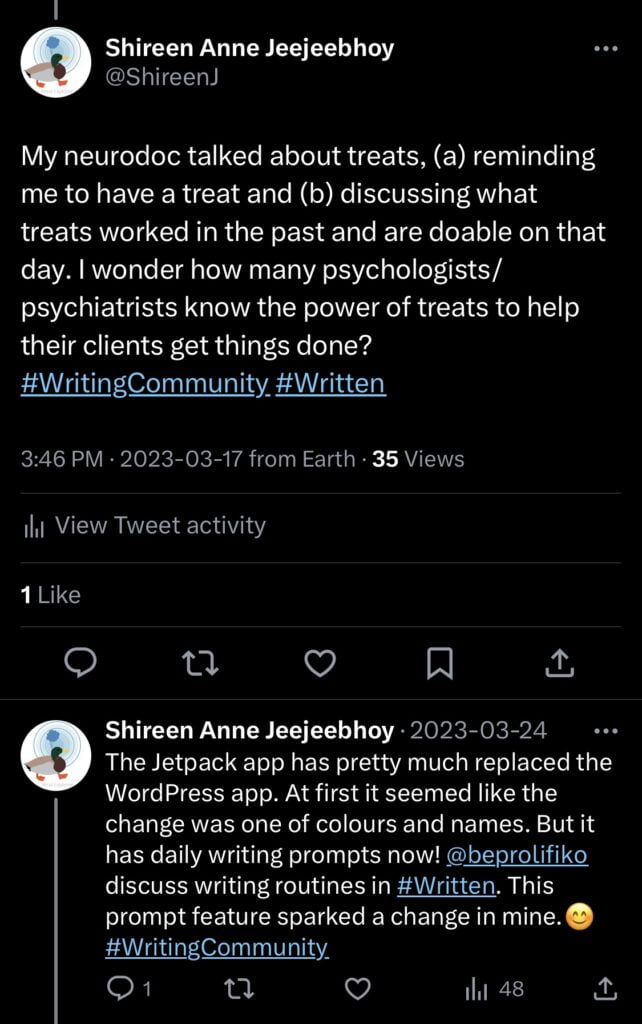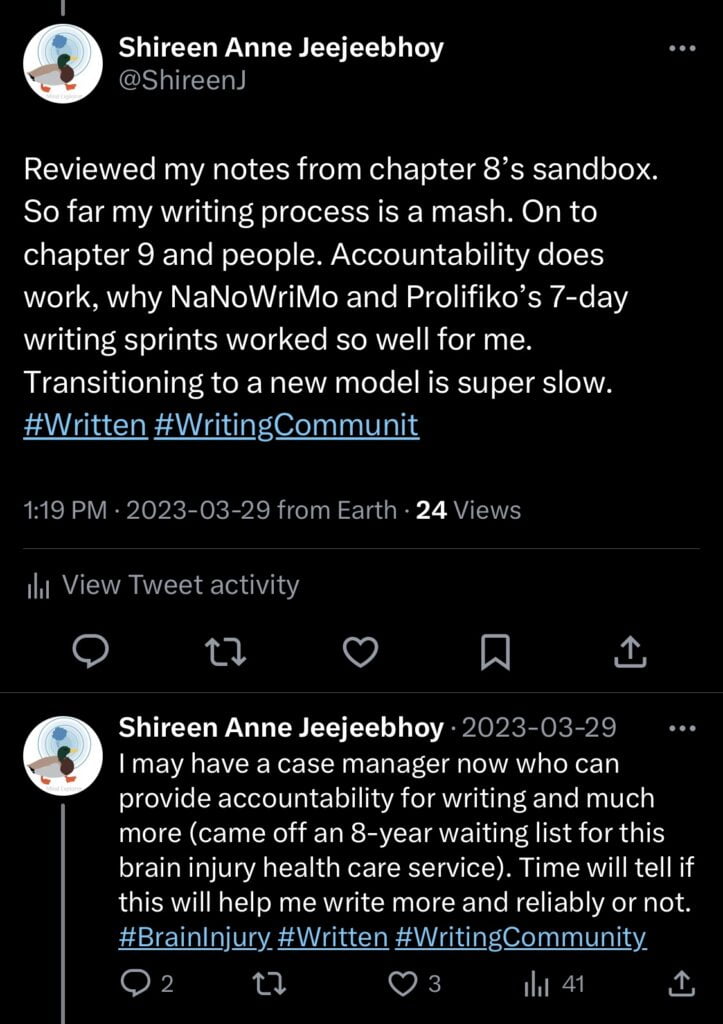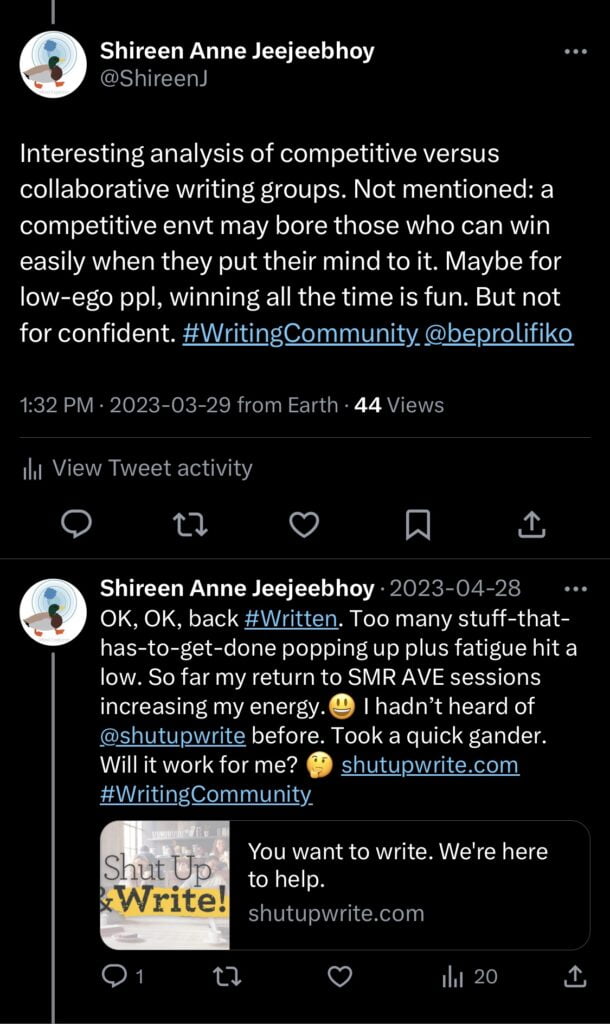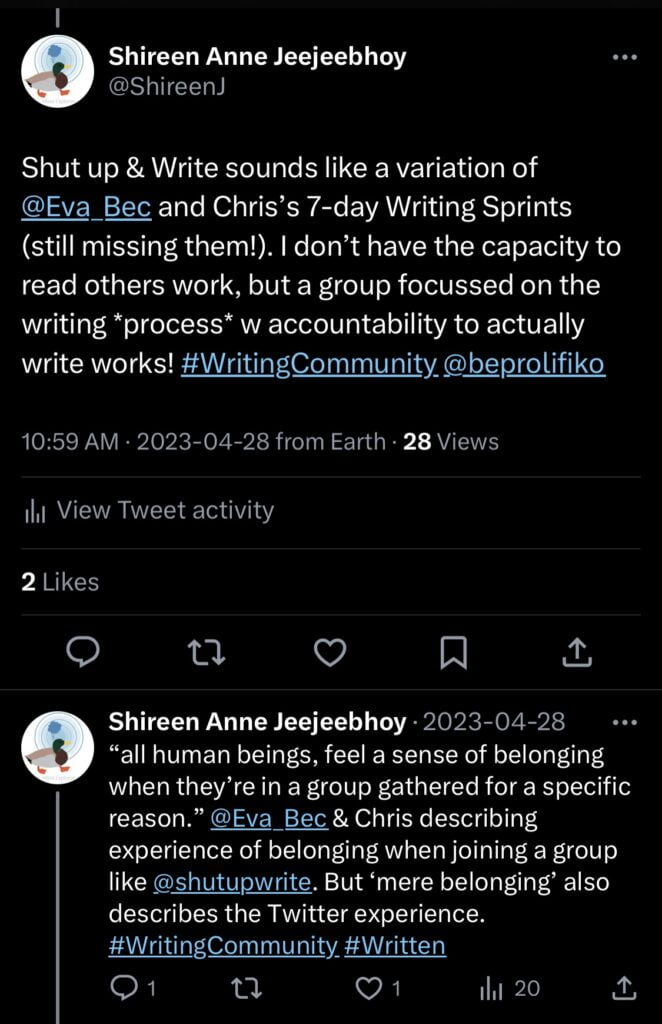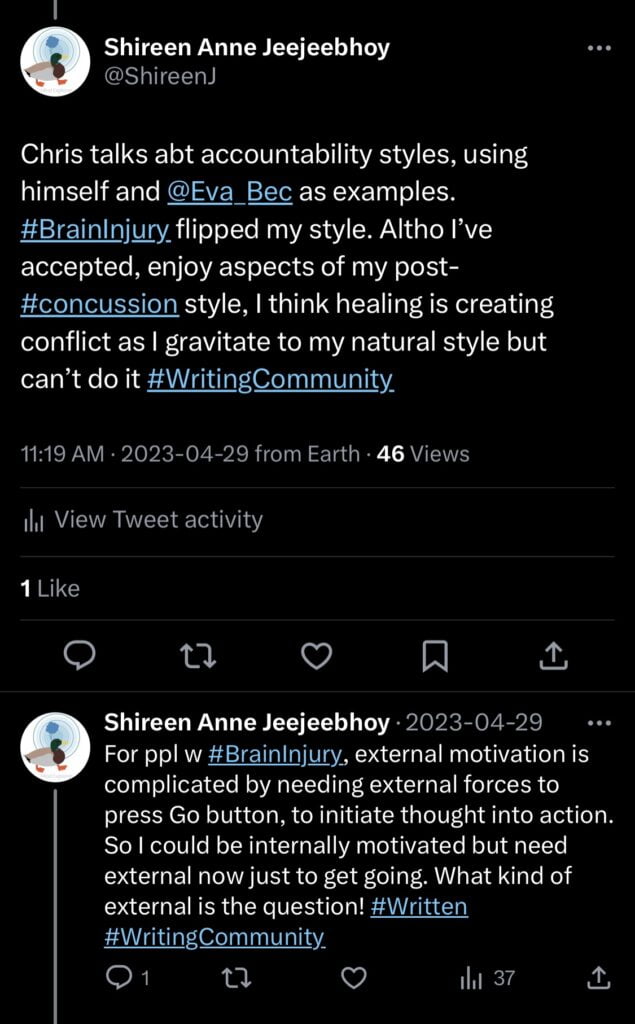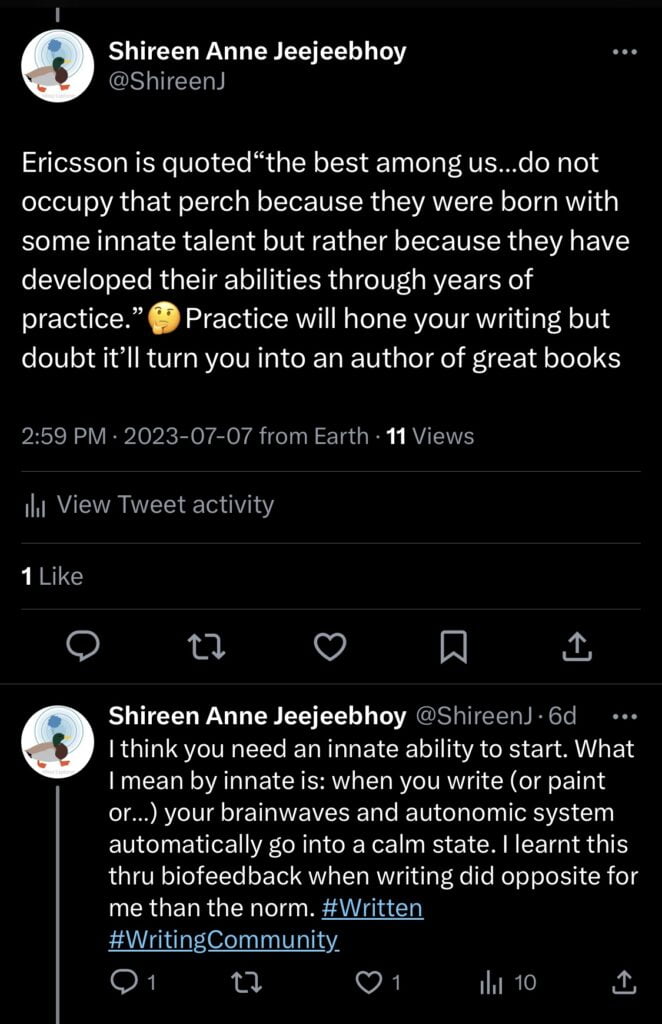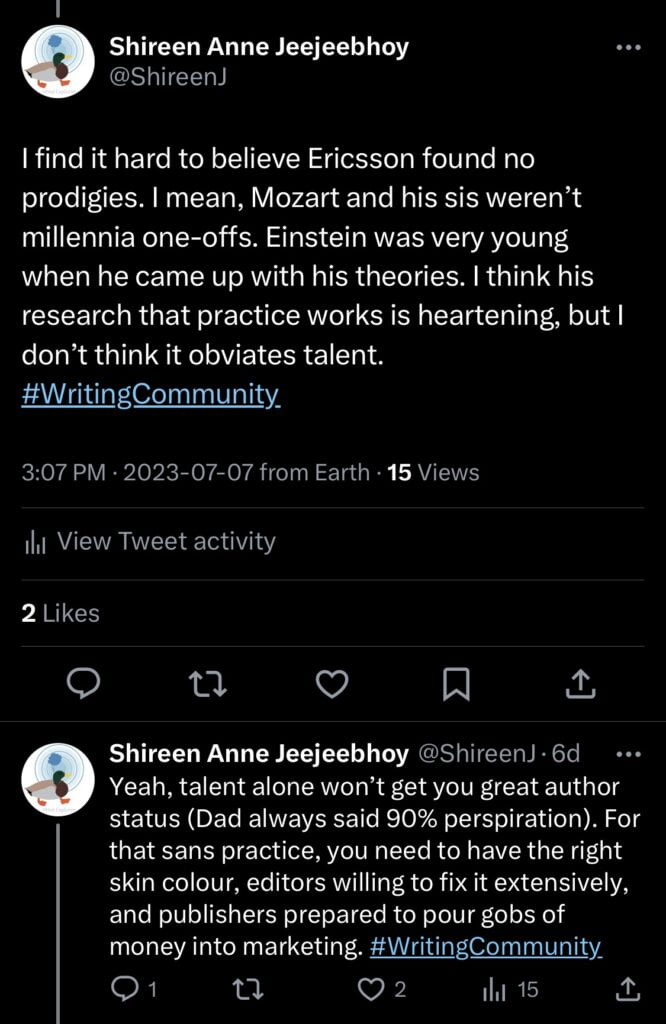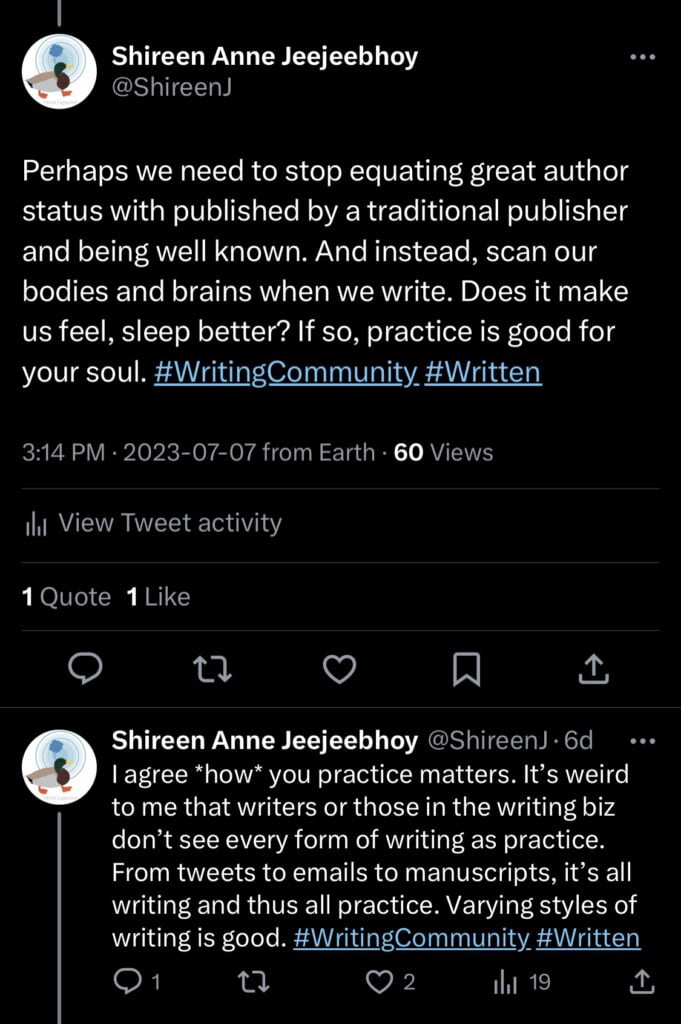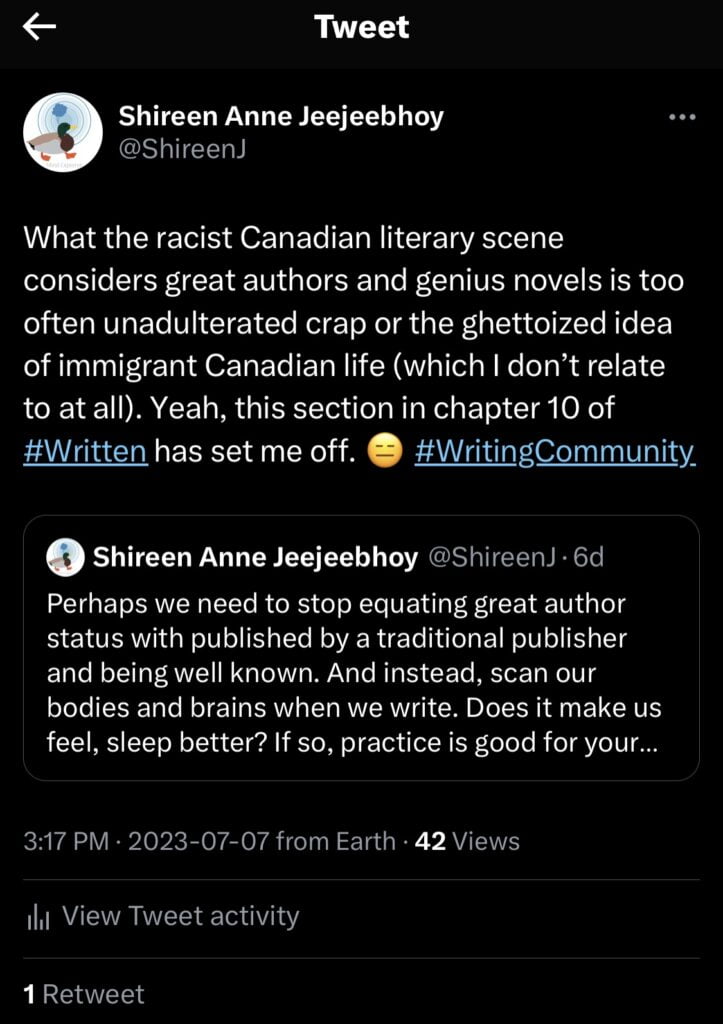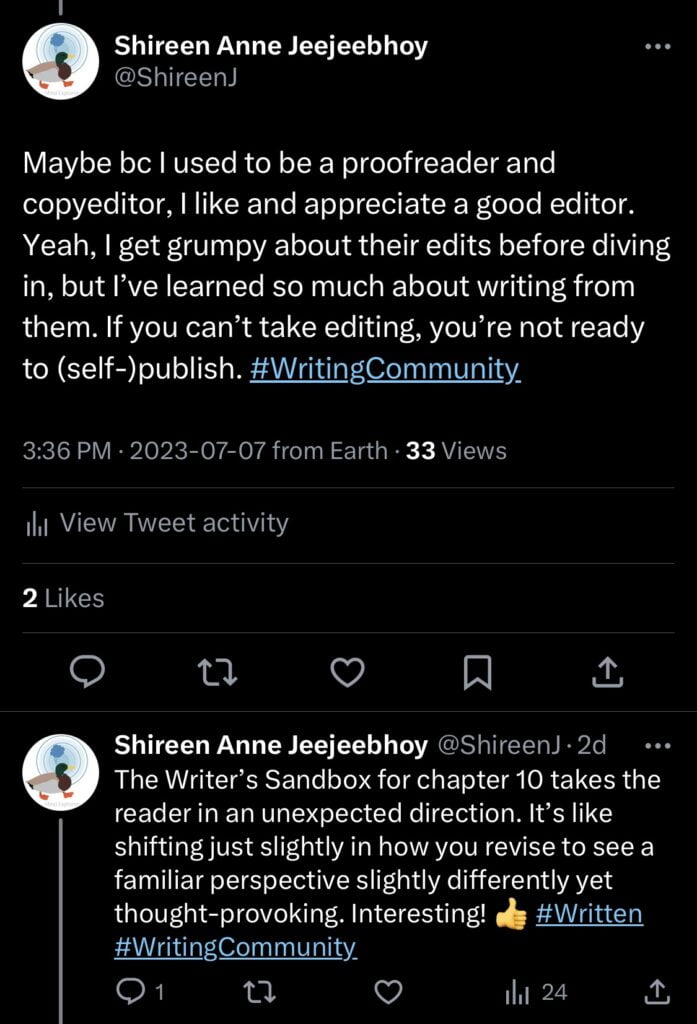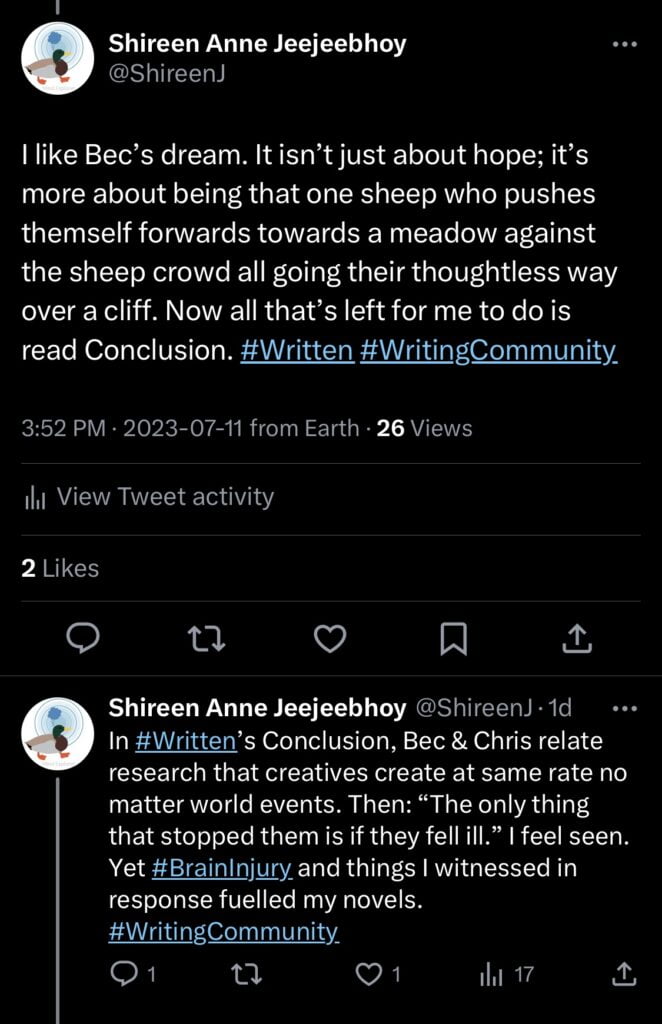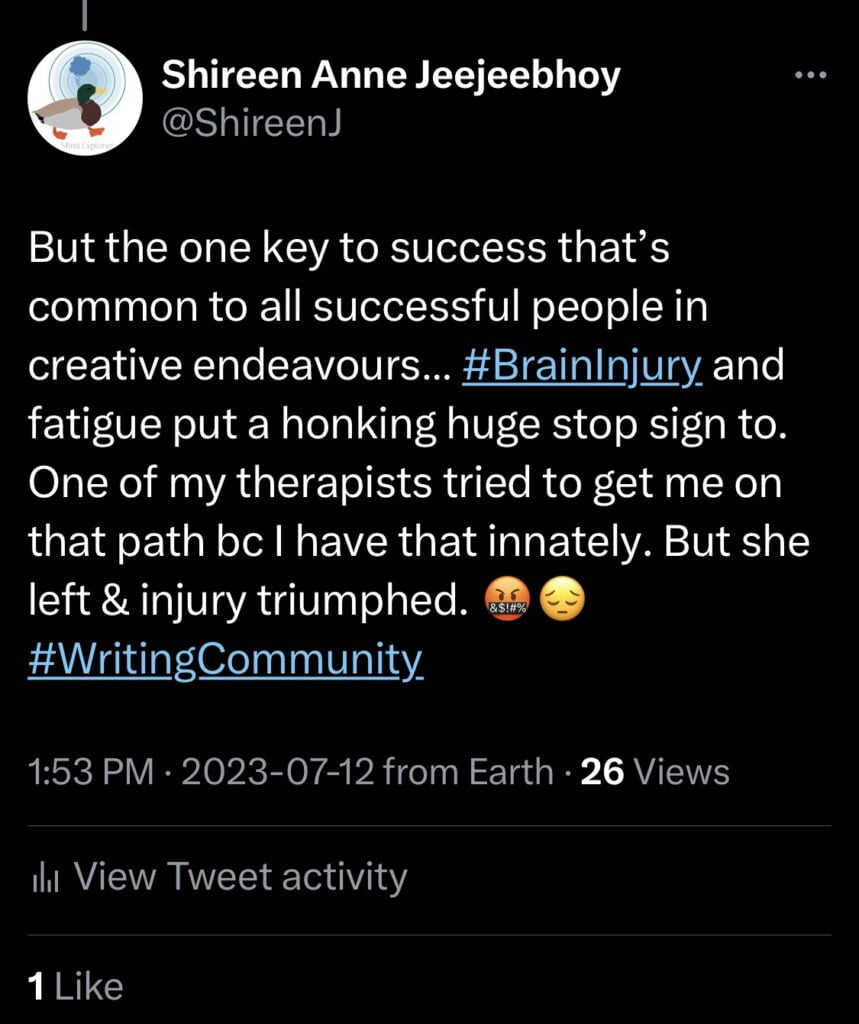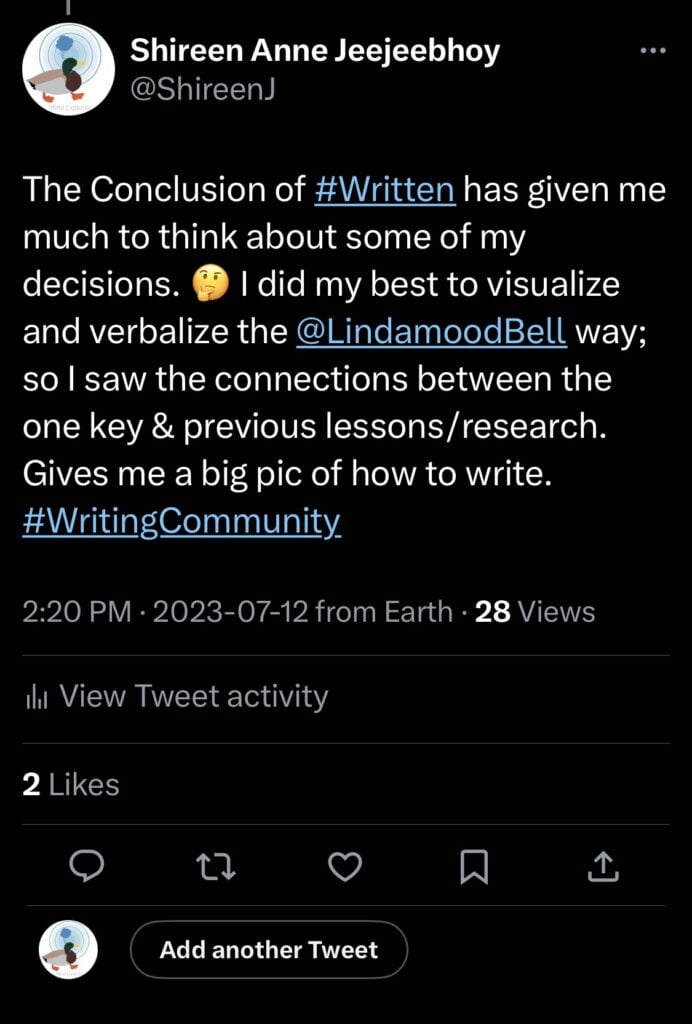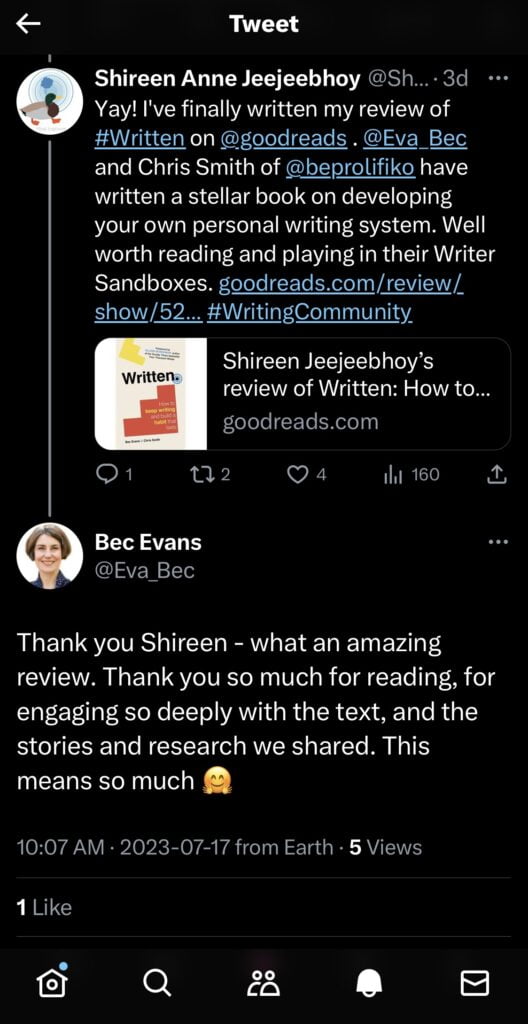
Written is a book for any writer, crafted over many years by the owners of Prolifiko.
Written: How to Keep Writing and Build a Habit That Lasts
by Bec Evans
*I received a proof copy to review. Unfortunately, due to brain injury, fatigue, and big distractions, I finished it months after it was released.*
I believe I first heard about Prolifiko, Bec Evans and Chris Smith’s company, on Twitter. I’ve been through a couple of incarnations of their methods to help writers write. When I first heard a few years ago about their free 7-day Writing Sprints, which ran the first week of the month, I signed up and finished at least two manuscripts, taking them to self-published status. So I was pretty excited to hear about their push to finish Written and said yes when they asked to interview me for the book.
The Advance Copy
I wanted to reciprocate how they helped me with my writing, from manuscripts to posts, and began reading the PDF proof copy, with the intention to review it when done before their launch date. And like I do with other non-fiction books, I started a Twitter thread on my thoughts as I read it. But fatigue has a habit of swallowing up good intentions. I didn’t stop writing tweets for my thread, though, when I could pick up the book days or months later. And I also began to add status updates to the book’s Goodreads page.
I’d intended to skip the Foreword, but Oliver Burkeman’s first words drew me in. With that propitious start, I dived into Bec’s introduction with her vivid personal story. Her curiosity and self-reflection shine out. Personal stories, well told, engage a reader and immediately make clear the point that the writer is making. This book seamlessly journeyed from the authors’ own personal stories to well-known authors’ stories of how they wrote their famous books to a diversity of research to clients’ experiences in finding ways to write. They also talk about their own research into how to go from wanting to write to actually writing. This book isn’t about how to write, it’s about how to write. Ahem.
How do you craft a writing habit for yourself?
When you have a decent grasp on the craft of writing but stop and start writing and can’t get your goals done, how do you craft a writing habit that fits you?
Written is about developing a personal writing system that helps you write more than you are now and to enjoy it. This book doesn’t espouse a one-size-fits-all nor does it advise everyone must follow the same rules; it’s about learning from the research and others’ experiences to develop your own system.
Bec and Chris divided the book into three parts: The Approach; Start Writing; Keep Writing. They spent much time on the structure of their book, and they succeeded in creating one that works. I’ve read other non-fiction books by well-known authors whose book structures either confused me or sent me flipping back and forth, not to refresh my memory but to restructure it in my mind so that it made sense. I had no such problem with Written.
In the beginning, they distinguish between craft and process — crucial, although at the end of the book they do skim along the edge of craft. And they bring up some terms that they refer back to in later chapters. Although I visualized and verbalized in the way Lindamood-Bell had taught me during reading comprehension rehab, because of my long fallow reading stretches, I didn’t recall some of the terms such as disfluency when referred to later on. It may be a good idea to write down unknown vocabulary. With a PDF, a glossary is a pain to check, so I don’t know if they included one or not. If not, it would’ve been helpful.
Illustrations and Writer’s Sandbox
I loved the illustrations that introduce most of the chapters. They’re not just eye candy; they illustrate concepts the chapter discusses, making them easier to remember and understand. When you finish the chapter and return to the illustration, you’ll be able to see more in it. They’re also a form of Easter eggs.
At the end of each chapter, Bec and Chris include a Writer’s Sandbox. I guess the sandbox metaphor is one of play; it sets up the feeling that writing isn’t a chore but something to enjoy, to look forward to, to experiment and play with. Taking the time to do the exercises in the Sandbox — printing out the resources some of the Sandboxes are linked to — will help you both understand the concepts and develop your own personal writing system. Sometimes you may have no answers. But that’s why having a copy of the book is useful — when you’re ready to tackle some of their harder questions, you’ll have the book on hand to review the chapter and play in the Writer’s Sandbox again.
Because I’ve been through brain injury rehab and studied psychology in university, I’m quite familiar with some of the concepts that Bec and Chris cover. Psychological research applies to many areas, I find. But relearning them in order to develop my own writing system is way more fun than strategizing a way to live within the hellscape of untreated brain injury. This book was like moving out of the brain injury house into one where all the cool, healthy kids live and them welcoming me there.
Find Me in Resilience
Chapter 7 is on resilience, and that’s where you’ll find what Bec learned from her interview with me — and all those many, many 7-day sprints she and Chris held and helped me through. It’s strange reading about yourself and another’s perception of your own experience: “…we’re going to meet someone determined to keep writing under the most extreme circumstances.” That was me. I had to set the book aside from a bit before I could read that section. I hadn’t thought of my circumstances as extreme before, but I do use adjectives like hellscape, nightmare, awful, when will it end. When you’re inside the unthinkable, you get used to it even though you wish daily to escape. I hope my experience will be as helpful to others as I found other interviewees’ experiences helpful to me.
This book came out at a time I was facing some major transitions in my life that require a writing process transition as well. I miss Prolifiko’s 7-day writing sprints, but this book and their newsletter Breakthoughs & Blocks fill in the gap somewhat. I’m going to order myself a copy so that I have it on hand when I’m ready to play in some of the Writer Sandboxes I’d left precipitously.
I am pleased that all the visualizing and verbalizing allowed me to build up a big picture of Written, to understand and retain the two kinds of writer I believe I fall into (two kinds for my variety of writings), to remember the one key all great authors hold, and to tie it to essential principles they covered before presenting that key.
I believe Written counters the myths we’re awash in about how we should write, releasing us from all the “shoulds” and empowering us to craft our own writing-process style. It can help newbies and experienced. It’s useful for when starting out in the writing scene and for when major events require a transition in writing process. Bec and Chris’s personalities shine through in this book, enfolding the reader in their friendly yet firm guidance and gently pushing us to become independent writers.



